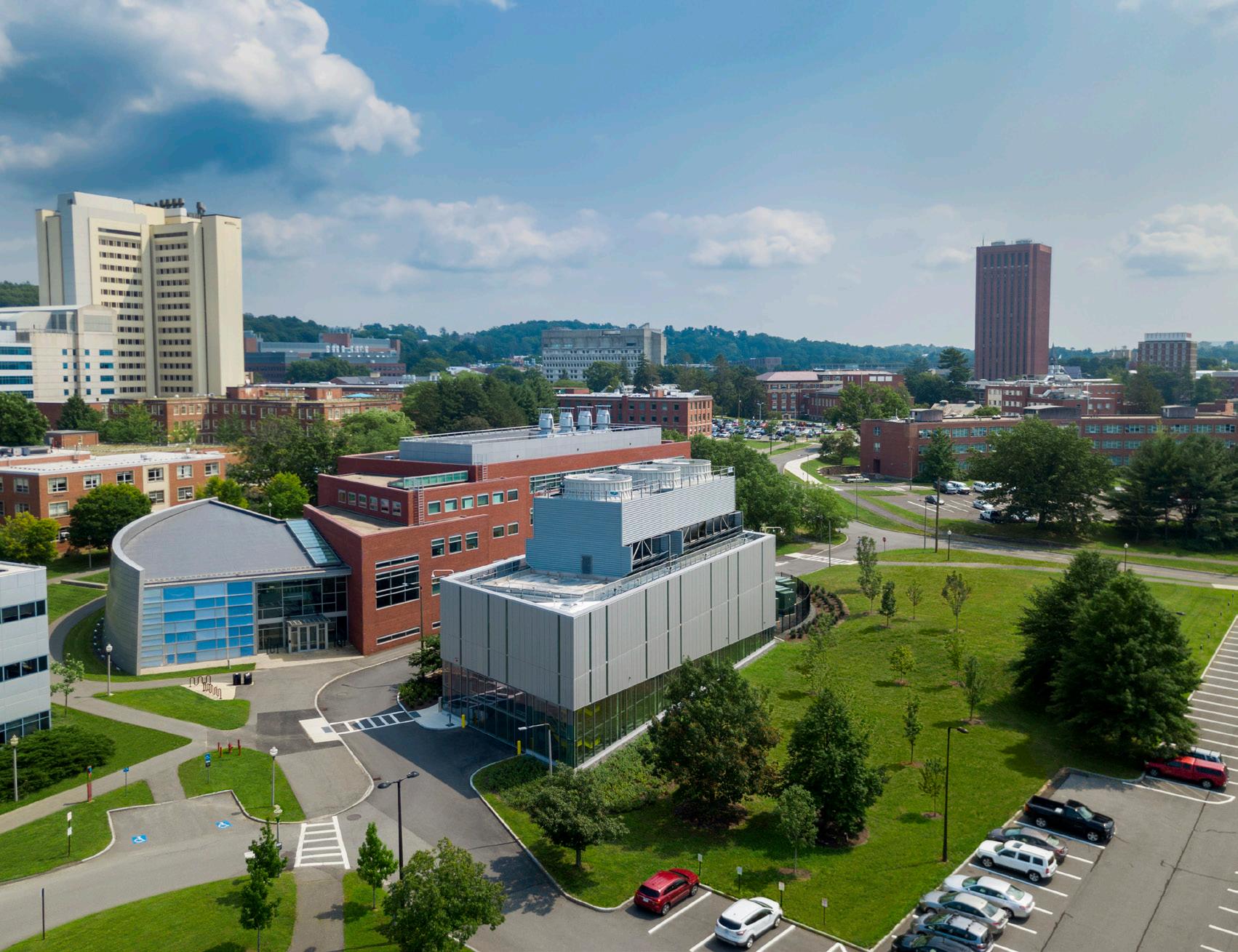ARCHITECTURE & URBAN DESIGN

LEERS WEINZAPFEL ASSOCIATES



ARCHITECTURE & URBAN DESIGN

LEERS WEINZAPFEL ASSOCIATES


From intimate scale community- based projects, to large scale urban infrastructure, what distinguishes our work is a high degree of craft and refinement, and the care we have for the human experience and for creating social connections.
In 1982 Andrea Leers and Jane Weinzapfel founded their practice in Boston with two fundamental goals: to create a bold and refined public realm architecture, and to build a collaborative inclusive workplace . The first opportunities were in infrastructure — a building suspended under a harbor bridge and an airfield maintenance building - which led to more significant projects such as the University of Pennsylvania Gateway Chiller Plant. Public buildings began with small youth recreation centers, and grew to include important civic buildings including courthouses in New England and beyond. Small university renovation projects led to landmark campus buildings for Harvard, MIT, Dartmouth, and Williams. In 2007 the practice was honored to receive the national AIA Firm Award, the first women-led firm to be so chosen. Today, Principals Josiah Stevenson, Tom Chung, and Ashley Rao share leadership of the forty- person studio including 60% women and 35% minorities in all positions.
Underlying each design concept is a clear commitment to the wise use of resources and a sustainable future. Leers Weinzapfel is an adopter of the AIA 2030 Commitment that evaluates the impact design decisions have on a project’s energy performance with the goal to reach net zero design by 2030.

Invested in a sustainable future


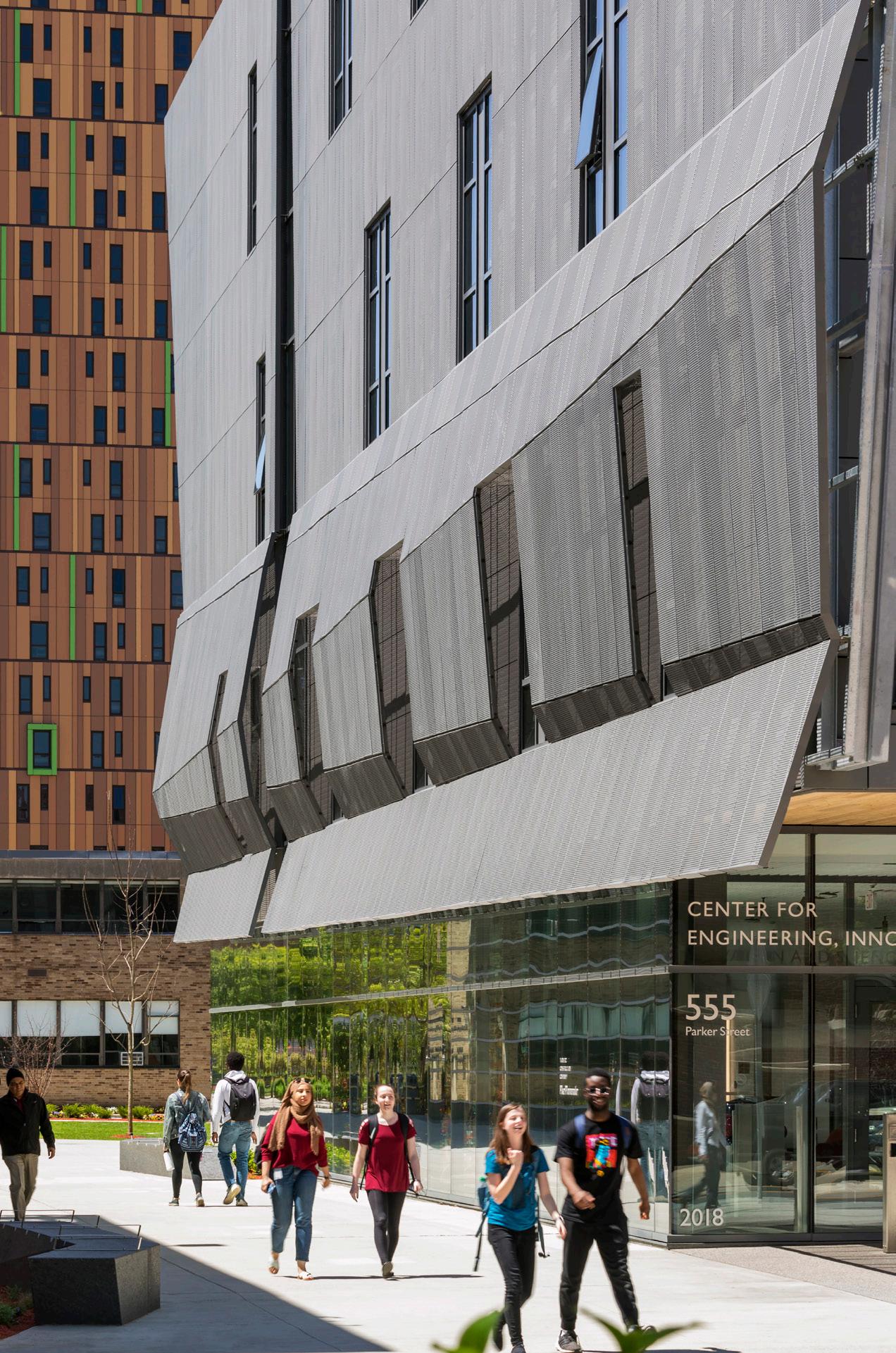
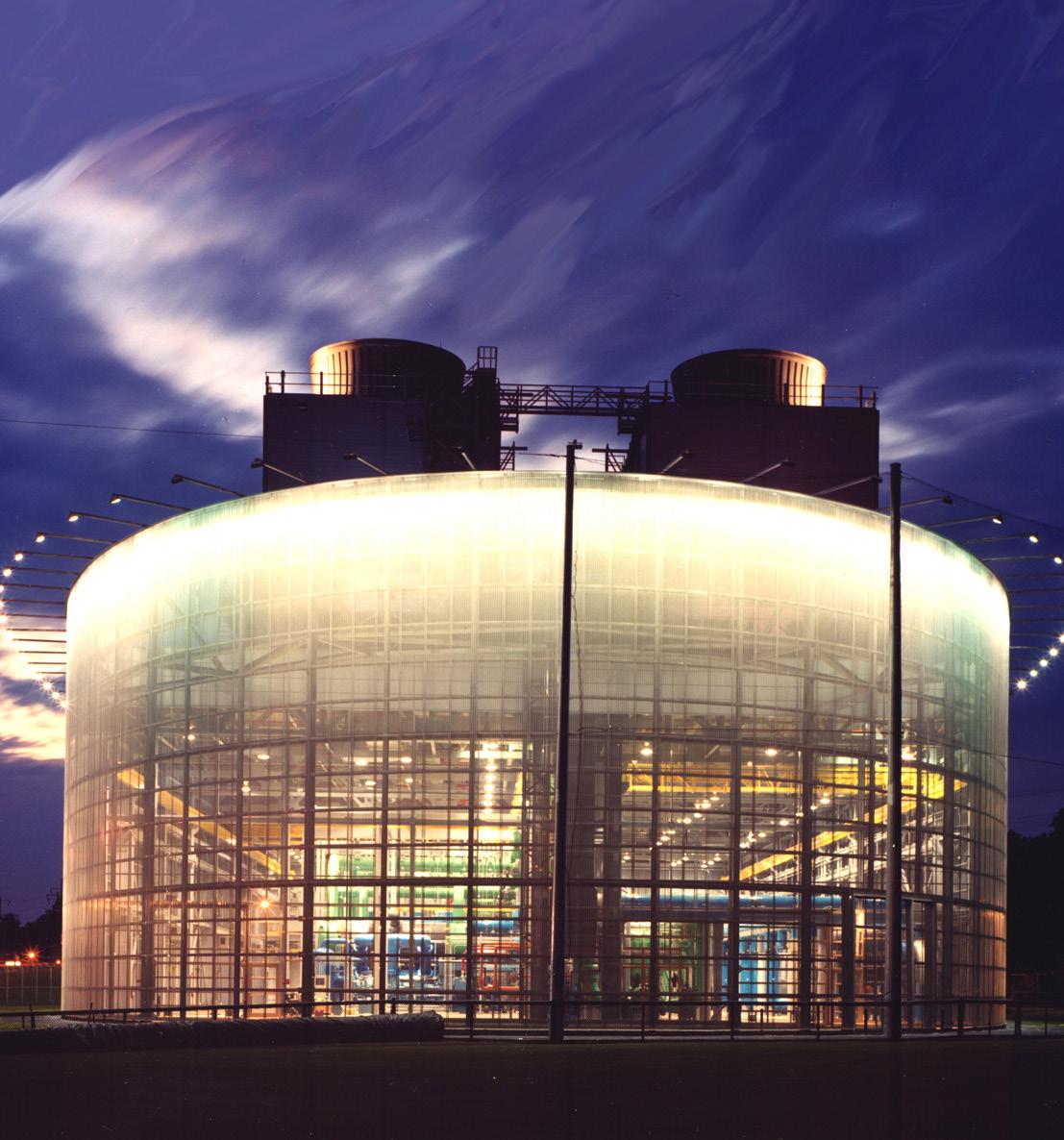
Wentworth Institute of Technology Center for Engineering, Innovation and Sciences
University of Massachusetts Amherst John W. Olver Design Building
University of Arkansas Adohi Hall
Cornell University Ann S. Bowers College of Computing Information Science
University of Massachusetts Amherst School of Public Health and Health Sciences
Williams College Davis Center
Dartmouth College Anonymous Hall
Harvard University Science Center Additions & Renovations
Harvard University Farkas Hall
Middlesex Community College Richard & Nancy Donahue Family Academic Arts Center
Brown University Metcalf Renovation
Harvard University District Energy Facility
University of Massachusetts Amherst North Chiller Plant
Ohio State University East Regional Chilled Water Plant
WENTWORTH INSTITUTE OF TECHNOLOGY
Boston, MA
SCIENCE


“Our core values embrace a culture of innovation and creativity as well as transformational educational experiences. The new Center for Engineering, Innovation and Sciences is the embodiment of the mission goals.”
— David A. Wahlstrom Vice President for Business, Wentworth Institute of Technology
Intended to be a showcase for the Wentworth Institute of Technology, this building provides a home for the next evolution of collegiate study in multiple engineering disciplines. The facility contains space for interdisciplinary project-based programs including laboratories, High-End Manufacturing, Makerspace and Public Assembly areas. It connects campus and city, and fosters exchange, collaboration, and experimentation among the departments.
As the Wentworth Institute of Technology’s program transitions from engineering technology to engineering and innovation, the new four-story, 75,000-square-foot Center for Engineering, Innovation, and Sciences comprises a dynamic environment for multi-disciplinary collaboration among students of biology, civil engineering, mechanical engineering, biomedical engineering, and biological engineering.
The Center is located on a midblock site at the heart of the Institute’s urban campus and plays a pivotal role in the campus plan. The building acts as a filter between two sides of the extended campus and strengthens the pedestrian pike that links them.
The Plan Awards, 2022 - Finalist, Education Chicago Athenaeum American Architecture Award, 2021
DNA Paris Awards - Winner, Architecture/ Educational & Sports, 2021
AIA New England Design Citation 2019
ENR New England’s 2019 Best Projects
IFMA Boston Awards of Excellence 2019


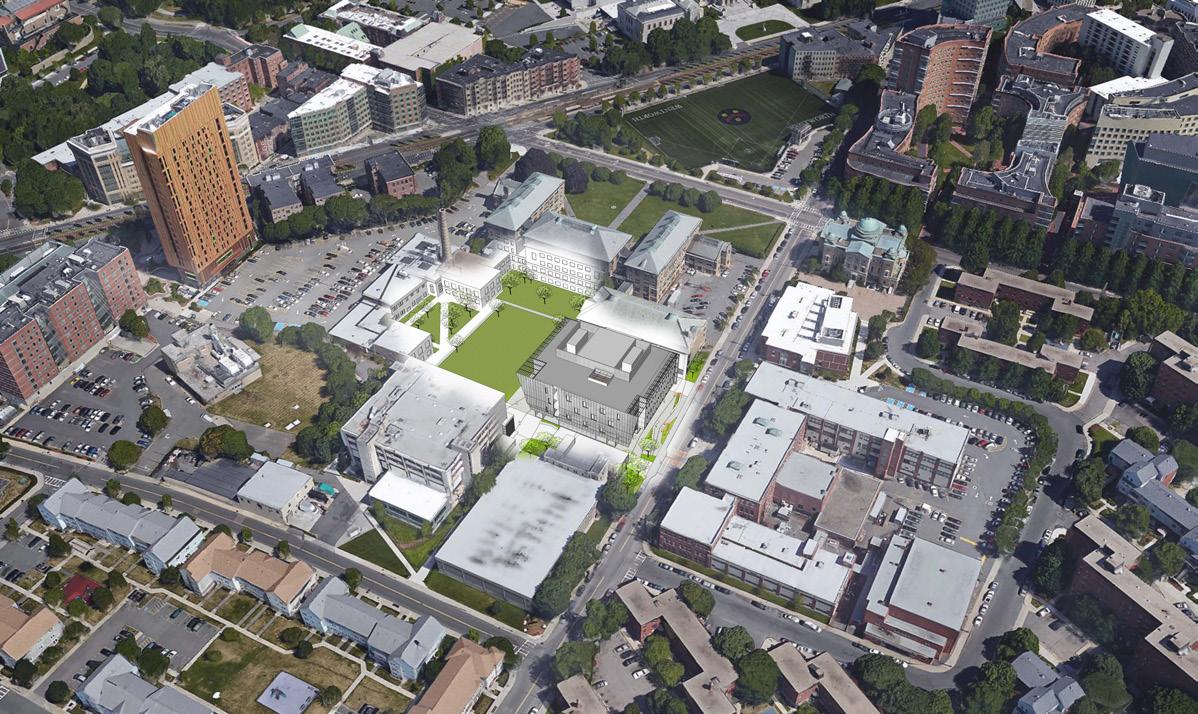


Amherst, MA
MASS TIMBER


For architects, their true skill set is to pull every square inch and throw it at the question. That’s what I try to teach my students—spatial intelligence. Our architects collected every extra square foot that they could to create common spaces that met our highest aspirations. Every time I walk by here, that’s what I think about. Now those spaces are filled all day, every day. When I walked in the building the first day and saw students sitting on this ledge here talking, I practically cried. “
— Caryn Brause, Assistant Professor, Architecture
Bringing together multiple departments, the John W. Olver Design Building is a dynamic space for exchange, collaboration and experimentation, and the embodiment of a shared commitment to innovation and sustainability.
To create a center space of collaboration, studios, faculty offices and classrooms surround a skylit Commons for gathering and presentations. The building also forms a green roof terrace, used during the day for outdoor classes and in the evenings for university-wide receptions.
The Design Building is a highly visible demonstration of sustainable design practice. The 87,500-square-foot project is the first cross laminated timber (CLT) academic building in the US. The building’s impact has been immediate and far reaching as a pioneering demonstration of sustainable Mass Timber, a renewable resource with negative carbon footprint.
NATIONAL & REGIONAL AWARDS
AIA Architecture Award, 2023
AIA Education Facility Design Award, 2022
AIA COTE Top Ten Award, 2020
AIA New England Merit Award, 2019
DNA Design Awards Paris - Honorable Mention 2019
SCUP Excellence Awards - Merit Excellence in Landscape
Architecture for General Design 2018
World Architecture News Awards - Sustainable Buildings 2018
WoodWorks Wood Design Awards - Jury’s Choice for Wood
Innovation 2018
Chicago Athenaeum - American Architecture Award 2018
Chicago Athenaeum - Green Good Design Award 2018
Wood Design & Buildings Magazine Award, 2018
The Plan Award - Finalist 2018
BSA Sustainable Design Honor Award, 2018
BSA Interiors Award, 2018
Wall Street Journal Best Architecture of 2017
World Architects Building of the Year 2017
BSA Honor Award, 2017



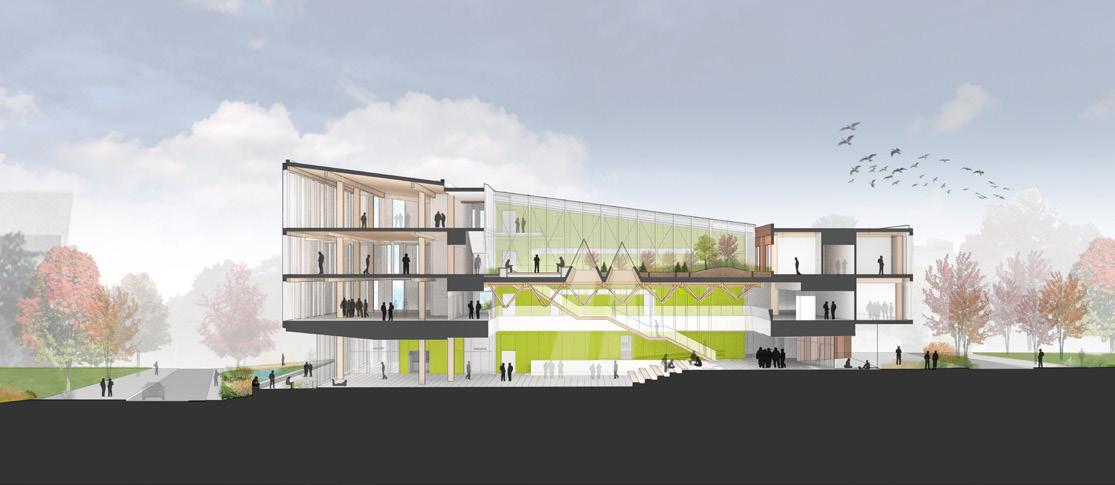



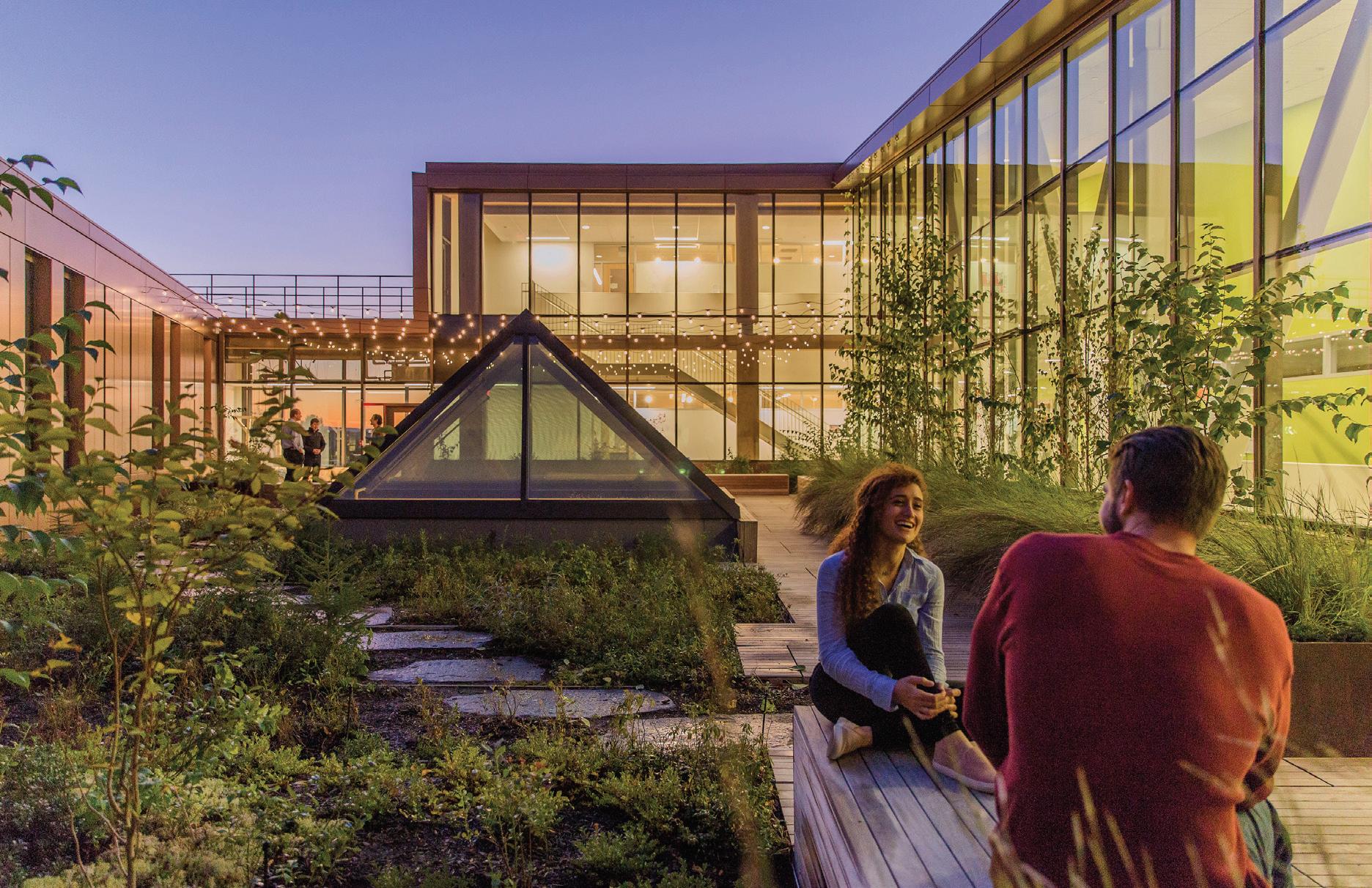

Fayetteville, AR
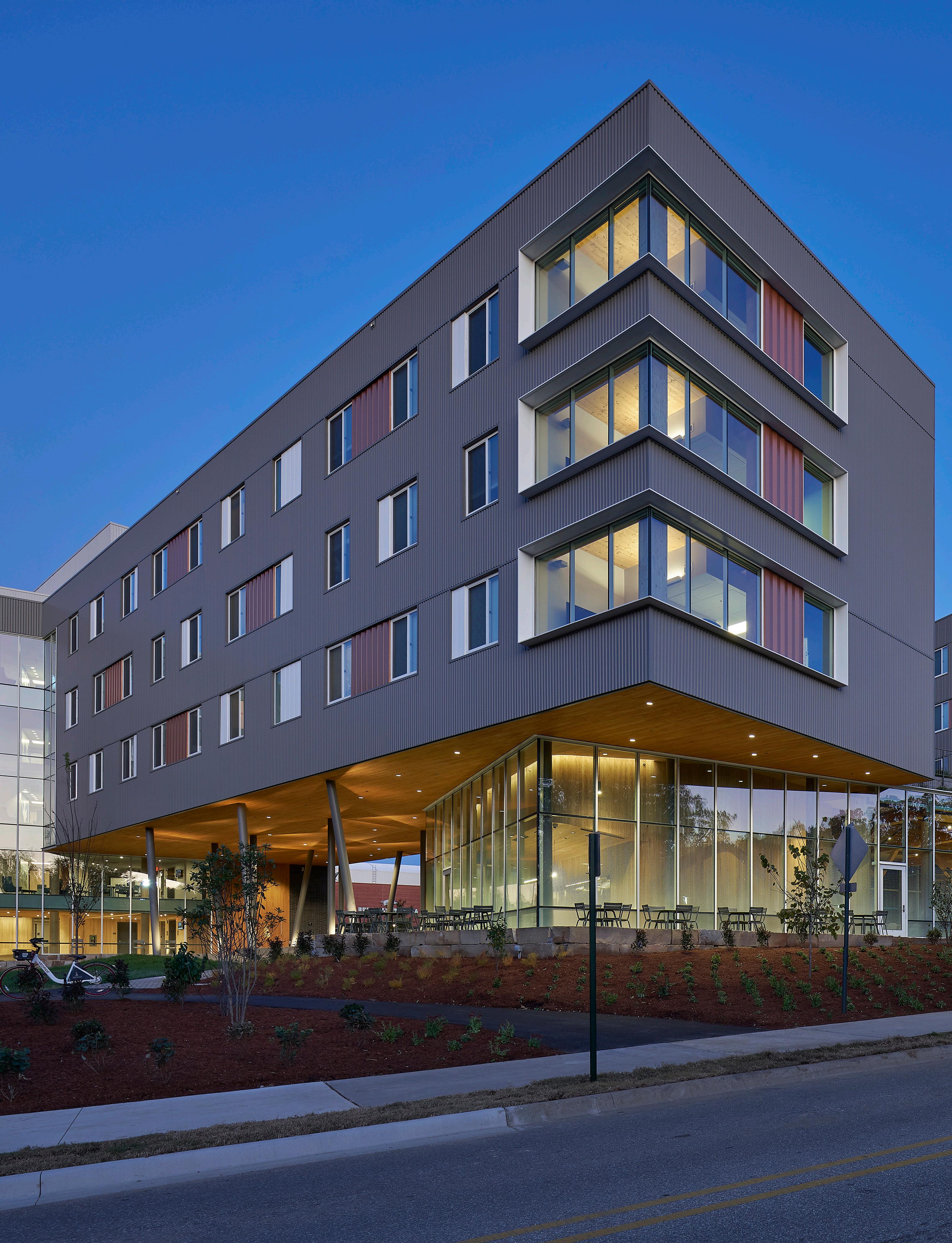

“The innovative design and materials demonstrated the university’s commitment to environmental sustainability and to the potentials of value-added responsible economic development for the state’s primary natural resource. The state of Arkansas has over 19 million acres of forest making more than half of the state forested. In 2011, 64,789 jobs in the state where related to the forest products industry.”
— Florence Johnson, Former Assistant Vice-Chancellor, University Housing
Adohi Hall creates a new residential college with emphasis on a creative live learn environment within a relaxed, informal, tree-lined landscape that reconceptualizes university housing.
At more than 202,000 square feet and housing nearly 700 students, the facilities are a bold demonstration of sustainability with clear ties to the importance of forestry to the region. Equally important for its use of cross-laminated timber and its approach to live-learn spaces, Adohi Hall is a pioneering venture for both the university and the state of Arkansas.
With a wide range of spaces shaped by wood - from student rooms, to quiet study lounges, to active learning work spaces and social communal spaces- Adohi Hall integrates the biophilic benefits of this natural, renewable material to shape the lives and enhance the education of students from the very private to the most public settings. At the ground floor, the Creative Community spaces – a series of gathering areas, maker spaces, dance studios and performance areas -- cascade down the hill, with direct physical and visual connections to the outdoor courtyards. Outdoor areas invite activity and engagement, from the hammock grove in the northern courtyard, to the loose seating that spills out into the terraces around the central cabin social space, to the informal native beam stone.
Modus Studio, Mackey Mitchell Architects
SCUP/AIA-CAE Excellence in Architecture Award, Honor, 2024
WAN Americas Shortlist 2024
Chicago Athenaeum & Global Design News - Future House
International Residential Award, 2023
Chicago Athenaeum Green Good Design Award, 2022
Architizer A+, 2022 Architecture + Collaboration Finalist
AIA Housing Award, 2021
Chicago Athenaeum American Architecture Award, 2021
World Architecture Festival, Shortlist - Housing, 2021
World Architecture Festival, Shortlist - Best Use of Certified Timber, 2021
BSA Sustainability Award, 2021, Award
BSA Housing Design Award, 2021, Citation
Architect’s Newspaper Best of Design Award, 2020
Wood Design & Building Honor Award, 2020
WoodWorks Multi-Family Wood Design Award, 2020
The WAN Awards – Wood in Architecture Gold Winner, 2020

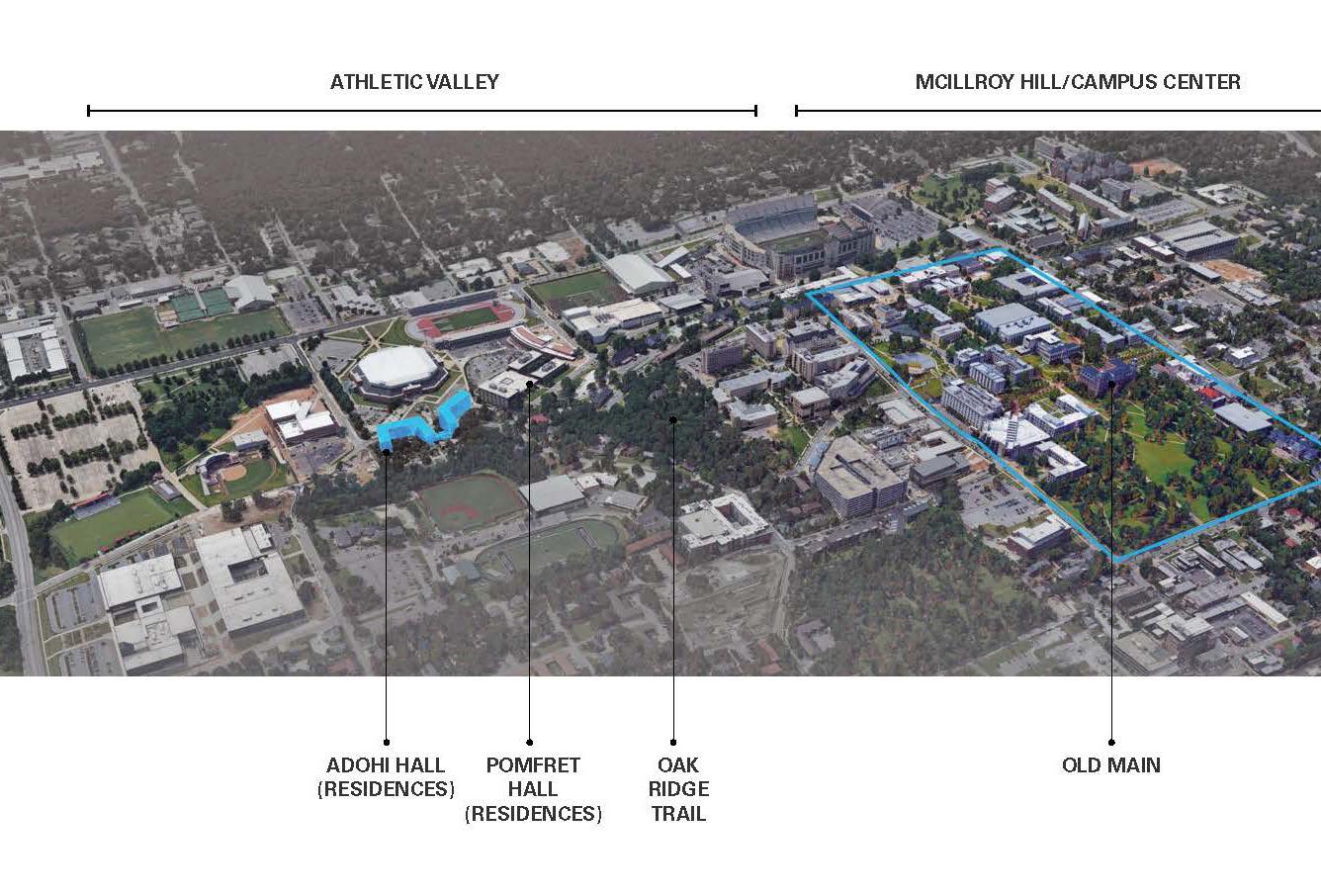




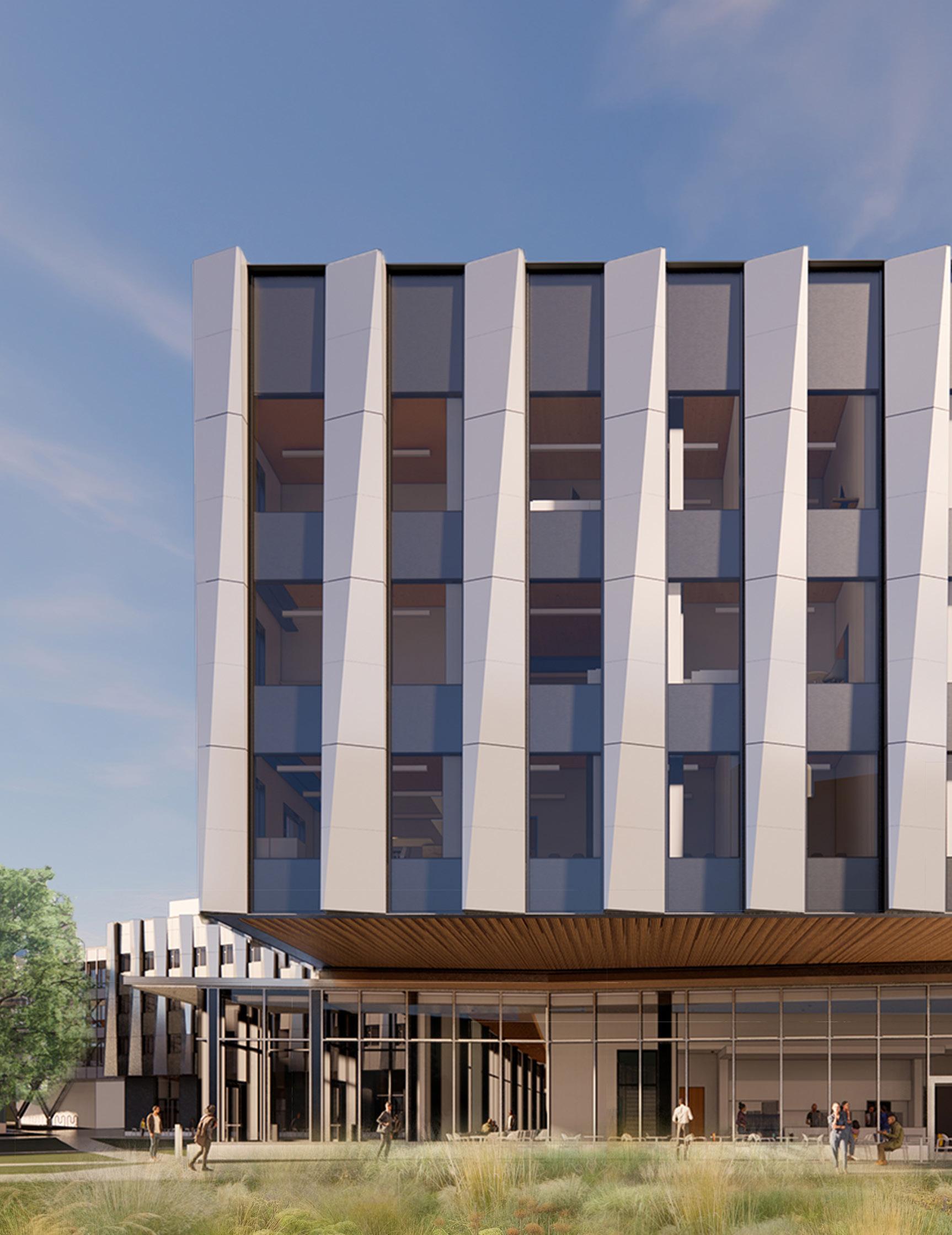
CORNELL UNIVERSITY
COLLEGE OF COMPUTING AND INFORMATION SCIENCE UNDER CONSTRUCTION
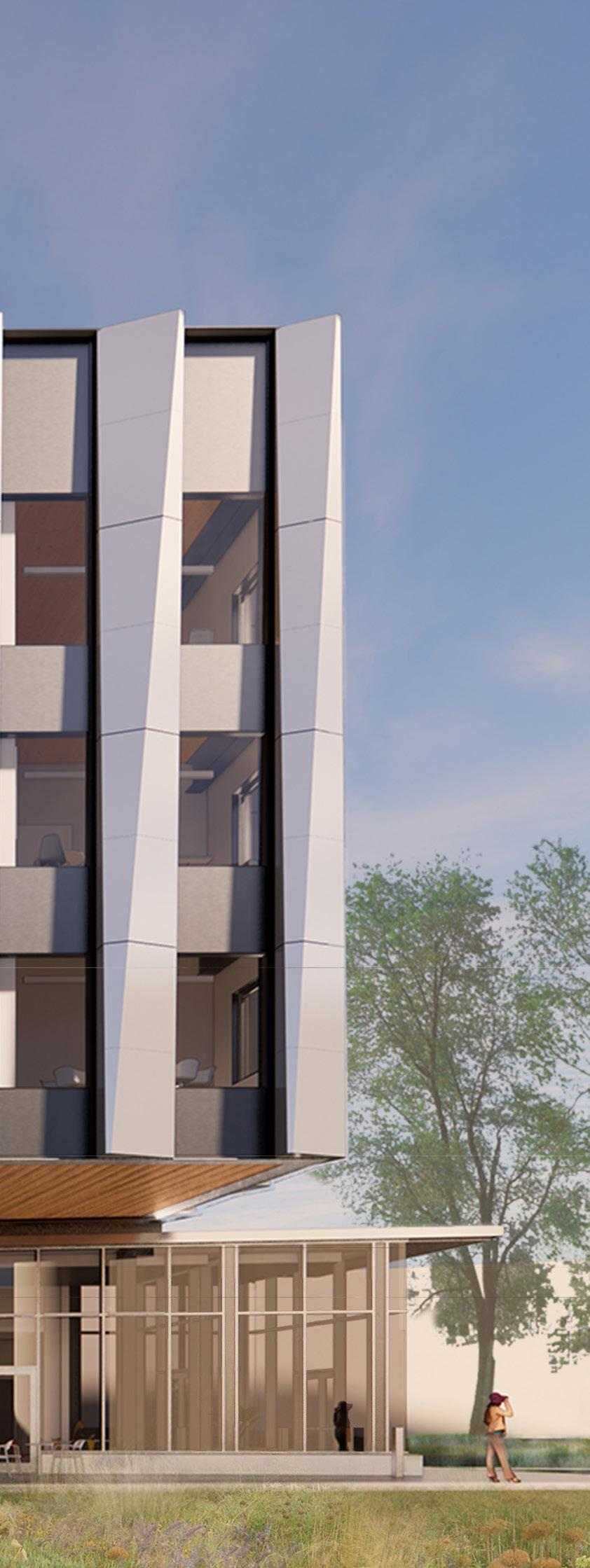
“The multi-use building will connect to the college’s existing Bill & Melinda Gates Hall (Gates Hall), and, expand opportunities for student research and experiential learning with new research initiatives that will position us for continued world leadership in tech.”
-Dean Kavita Bala
Cornell University as quoted in project Press Release
Cornell’s rapidly growing computer science programs required a new 135,000 sf Computing and Information Science building (CIS) connected to the college’s existing Gates Hall designed by Morphosis in 2013. The College anticipates that programs will continue to grow in the future and a third phase of building is contemplated. The approach for the new CIS grows out of a campus planning perspective of interconnected rather than stand alone structures.
Located at the southern gateway to Cornell’s Ithaca N.Y. campus and adjacent to one of its world-famous gorges, the new four-story building will define a highly identifiable precinct of continuous building and open space, creating a magnet attracting students from multiple disciplines across the entire university. Its three research floors connected to Gates Hall will float above a lively and active ground floor framing an outdoor courtyard for daily use, and large gatherings. The two wings of the building that will contain academic research offices and labs are joined by a suite of collaborative spaces on each of their upper floors. At the ground level, a student “ramble” along the courtyard edge will provide a place for individual and small group study, while a café, commons, large interactive classroom, a series of large builder labs will welcome students to collaborate.
A ribbon of faceted sculptural metal fins will wrap the three-story research floors, creating a distinct identity for the building while maintaining a sustainable limited window area. Exposed CLT floor and roof framing similarly provide natural beauty and environmental benefits.
The project will strive to achieve LEED Gold certification which exceeds Cornell University’s design requirements for minimum Silver certification under version 4. The project will incorporate sustainable development strategies to comply with the Ithaca Energy Code Supplement and NYStretch Energy Code.


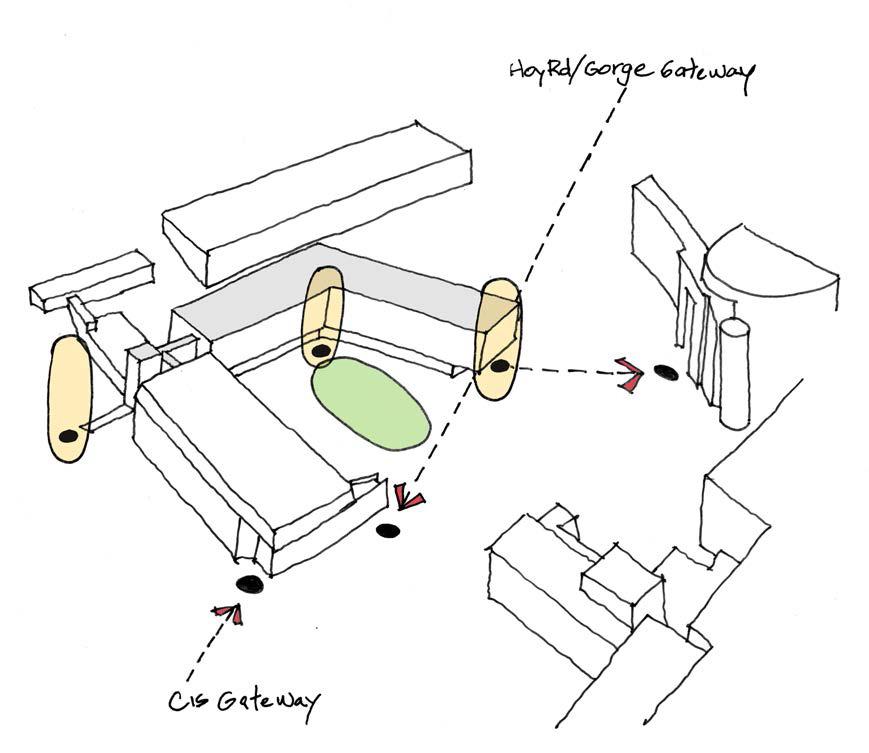
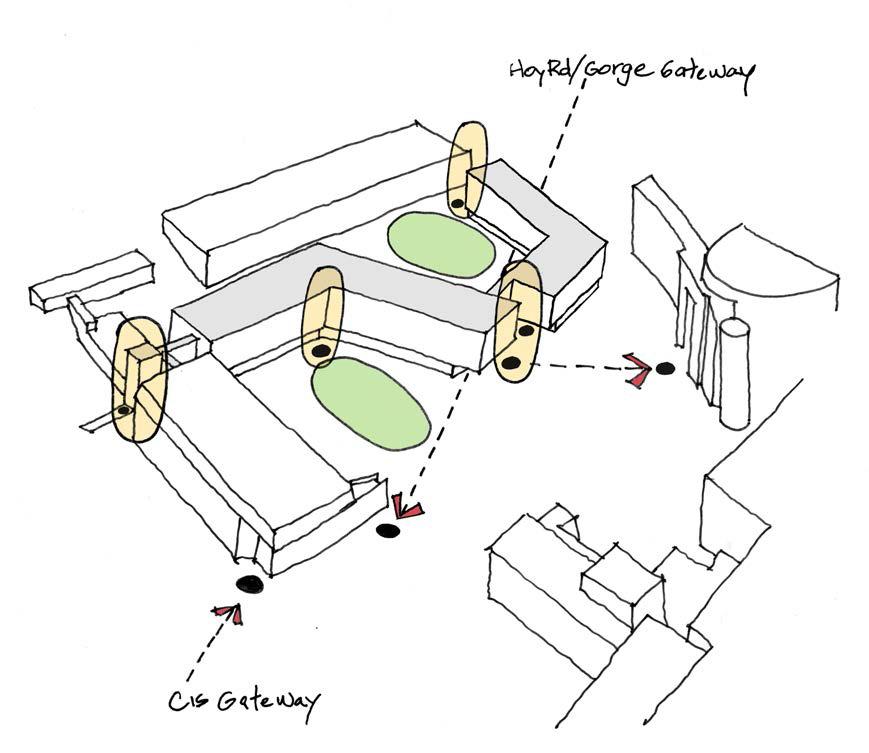



OF MASSACHUSETTS AMHERST
Amherst, MA
UNDER CONSTRUCTION

“This new building will become the heart of our community, embodying our commitment to education and our student-first mission. The architecture will incorporate natural elements— such as abundant natural light, organic materials, and shapes inspired by nature— creating an environment that fosters wellbeing, reduces stress, and enhances emotional resilience. These principles are at the core of our school’s and university’s mission.”
- Anna Maria Siega-Riz, Dean of School of Public Health and Health Sciences
The HUB creates a unified gathering place for the dispersed School of Public Health & Health Sciences (SPHHS) – a new core where students can learn, collaborate, access support and advising services, and foster a stronger sense of community.
One of the most important and growing schools at the University of Massachusetts, SPHHS is a national leader in finding ways to improve public health and quality of life for all, with a focus on reducing inequities. The 26,800 sf Hub will house team-based learning classrooms, seminar rooms, collaboration spaces, advising offices and at its core, a schoolwide Commons space that overlooks and engages with the exterior entry plaza.
The site is north of a rotary that previously marked the edge of the academic buildings in this section of campus. The new building connects with the 1958 Totman Gymnasium, now home to the SPHHS Department of Kinesiology. A large plaza between the new and existing buildings opens to the main campus to the south and its form it anticipates campus expansion in the future. The plaza will be used for warm weather outdoor activities, common for the mission of the school. A wildflower lined bioretention system, designed with a series of weirs and spillways, daylights stormwater run-off, minimizing underground pipes and cisterns.
To enter, the visitor passes through the shaded plaza, past the glazed commons and into a link connecting the Gym and the Hub. Mass timber structure and a grand wood stair highlight the warm inviting Commons space intended for student touchdown and study spaces along with school-wide gathering events. Doors open back to the shaded plaza in the warmer months. Classrooms are varied in size, flexible in their uses and each is adjacent to the double height Commons. First floor classes can spill out into the Commons and then onto the plaza, which is sized to accommodate tent events.

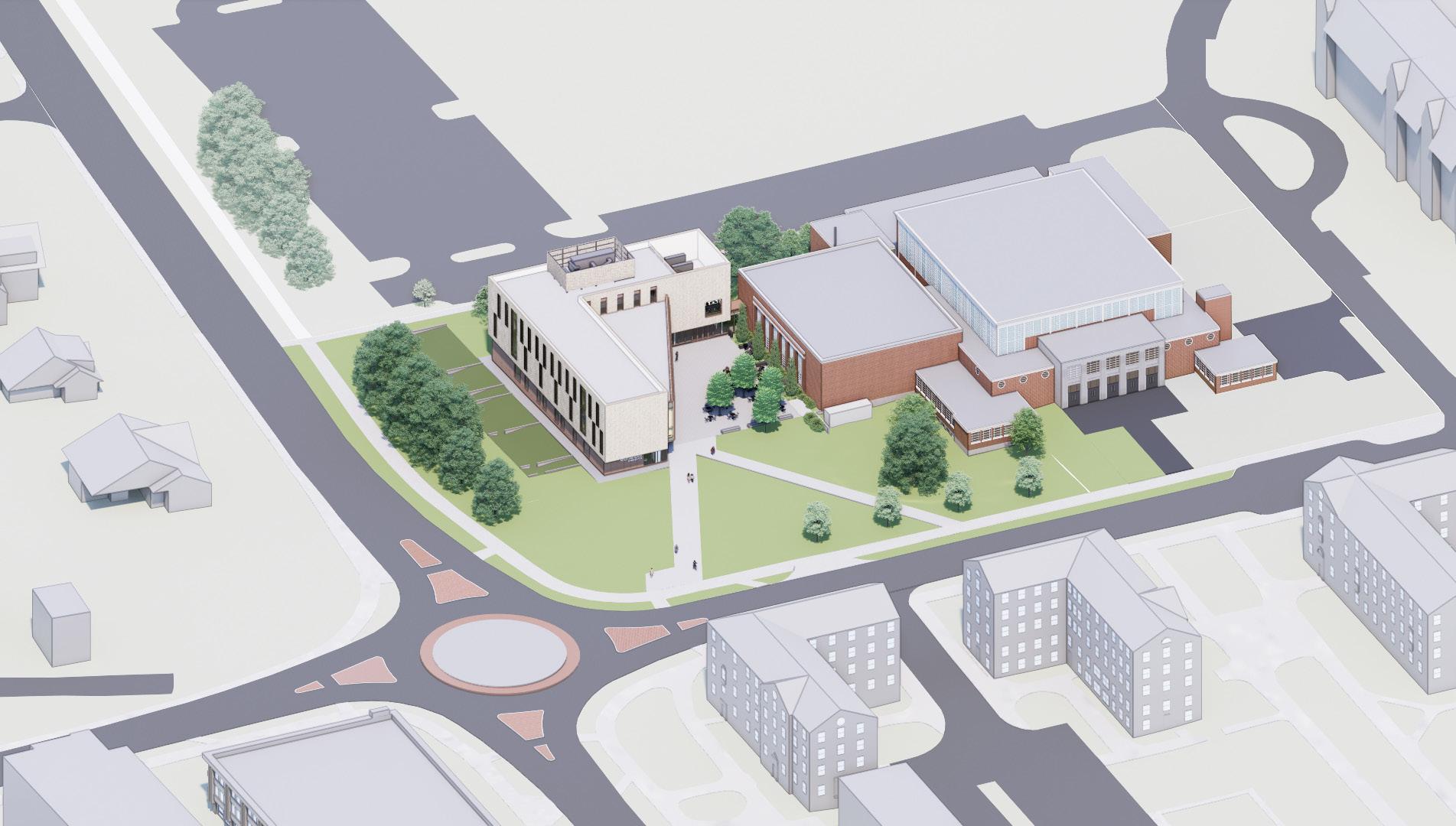

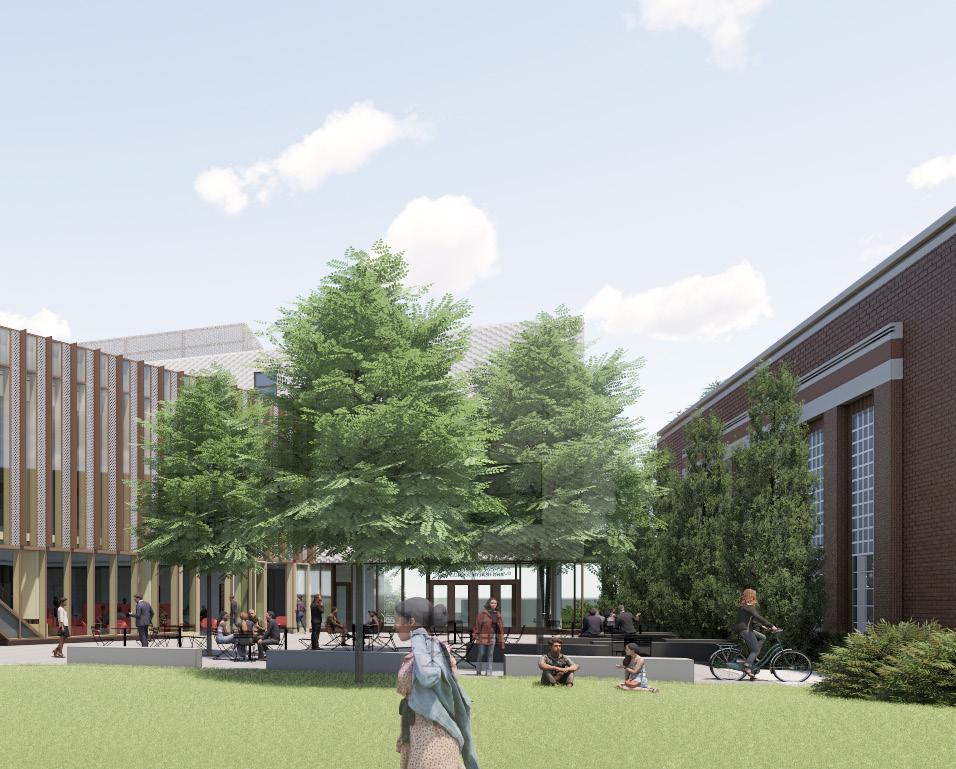
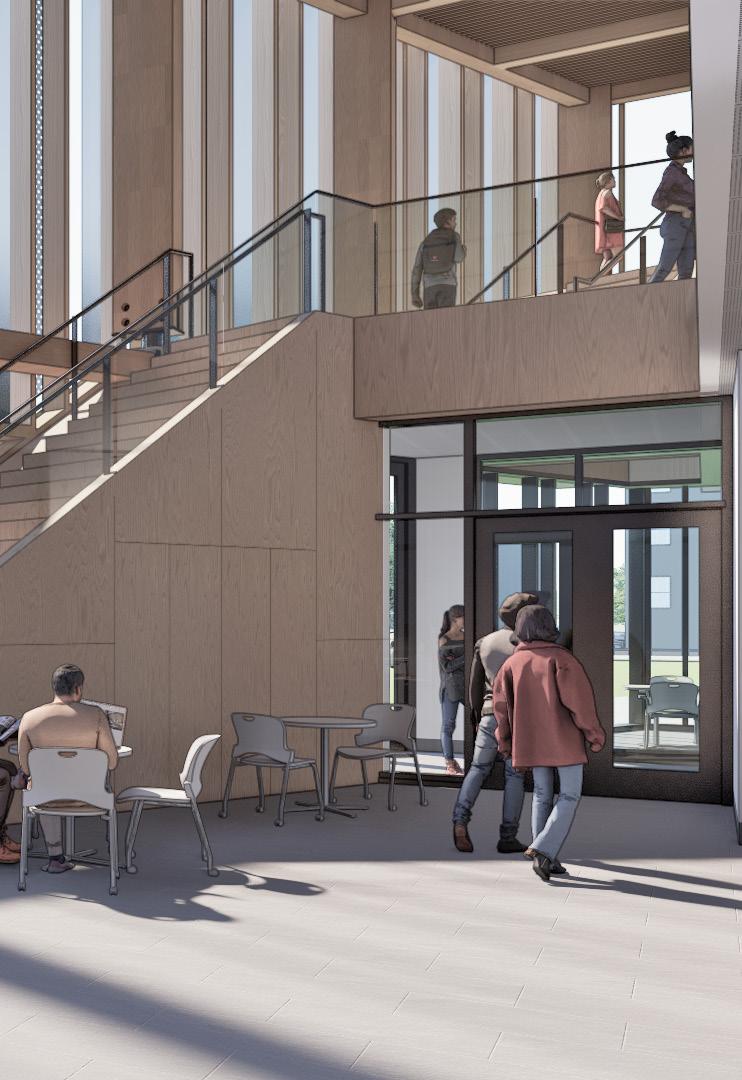
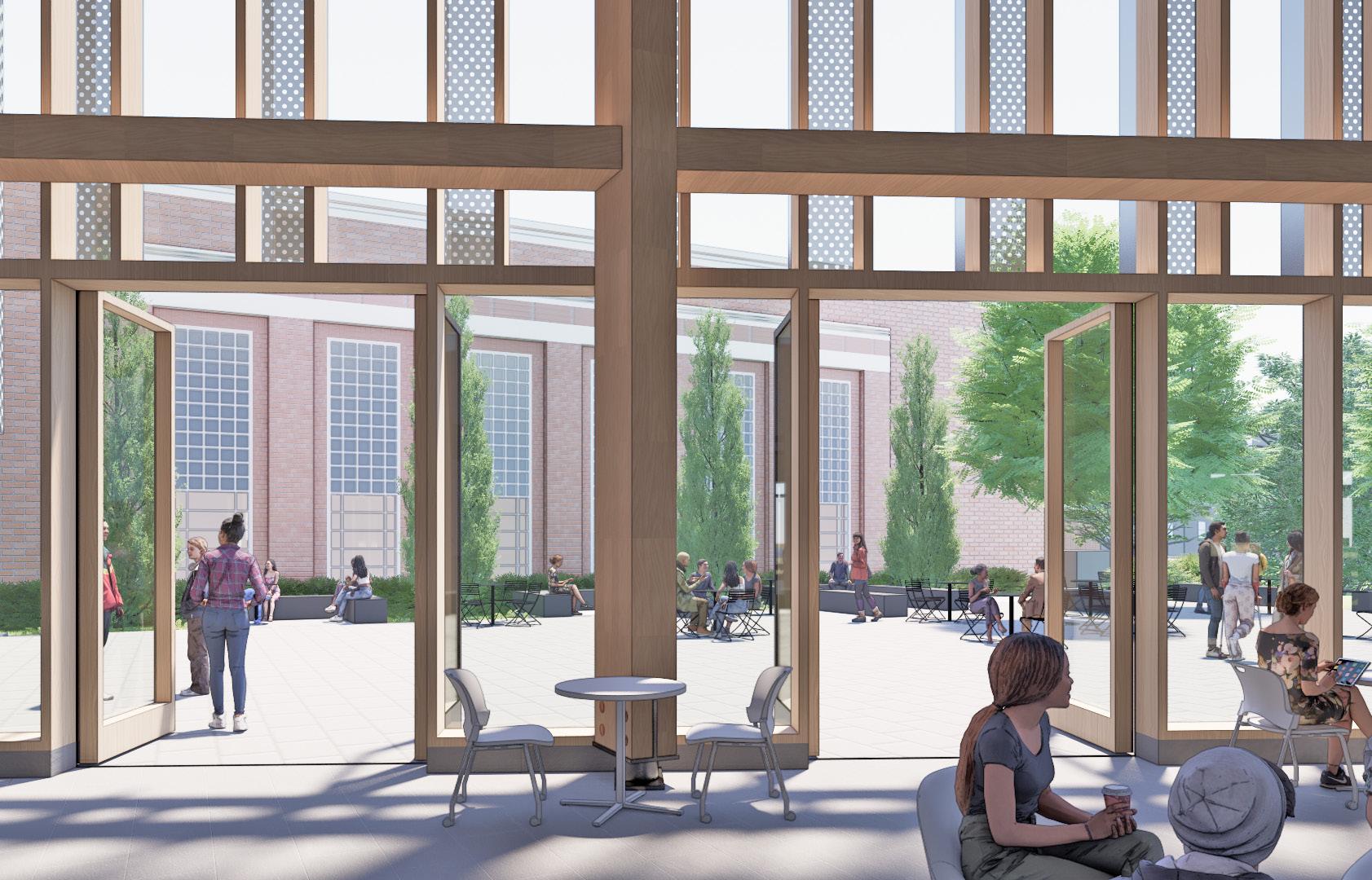
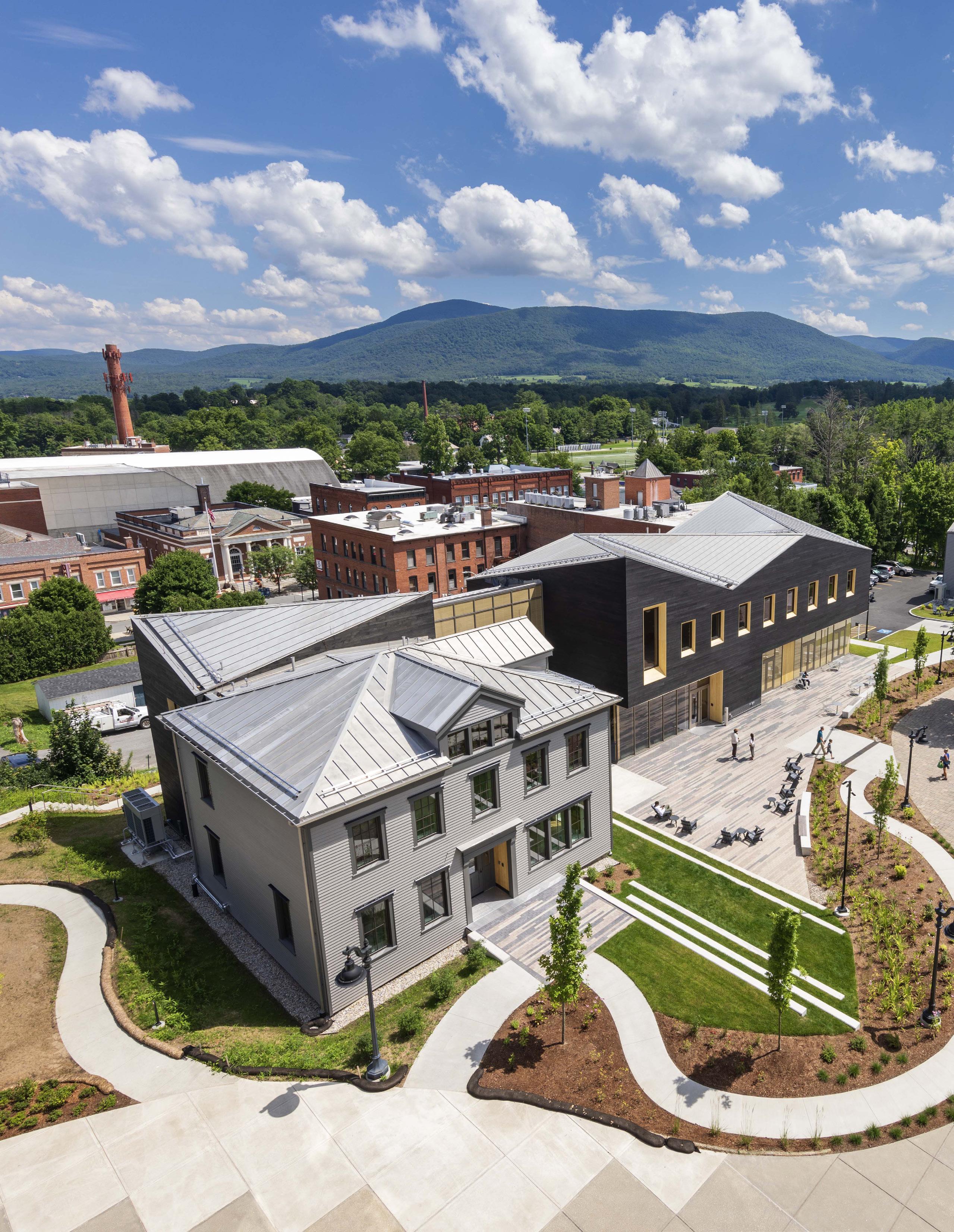
Williamstown, MA

“Research tells us that students learn most effectively when they feel at home. Over more than 50 years, many Williams people have made the Davis Center their campus home. The new facility blends the architectural features of that much-loved facility with state-ofthe-art co-curricular and informal gathering spaces. I am grateful to all the staff, faculty, students, alumni, and community partners whose commitment to ensuring a fully inclusive campus has brought us to this point.”
— Maud S. Mandel, Williams College President
The Davis Center manifests the enduring impact of student advocacy for social justice and inclusive community at Williams College. Tracing its roots to 1969 campus protests, the renovated and expanded Center reopened in 2024 as a hub of programs and spaces supporting historically underrepresented communities and advancing campus engagement with complex issues of identity, history and culture.
The reimagined 25,800 sf Davis Center is a unified complex with a major new addition nestled between the existing, beloved Rice and Jenness Houses. A central public plaza unites the three buildings, bounded by a winding riverine bioswale defining the edge of the Davis Center precinct. The project carves a new universally accessible path down to Walden Street and establishes a new public entrance facing Spring Street, reaching out past campus edges to connect to Williamstown beyond.
The new addition reflects the domestic scale of neighboring Rice and Jenness Houses, but with an open, transparent ground floor that acts as a civic invitation to broad campus engagement. A dynamic folded roofscape references the peaks and valleys of the mountain ranges that surround the College. The addition is clad in charred wood, a symbolic celebration of the community’s resilience in the face of struggle and adversity.
The Davis Center is net-zero operational carbon and net-zero embodied carbon, incorporating fossil-fuel free systems, deep-energy retrofit strategies, adaptive reuse of existing buildings, low-carbon wood structure, and purchased carbon offsets. Pursuing Living Building Challenge Petal Certification, the Davis Center is a bold and vivid expression of Williams’ commitment to cultivating a community that is socially just, culturally rich, and ecologically restorative.
ASSOCIATE ARCHITECT
JGE Architecture + Design
INTERNATIONAL, NATIONAL & REGIONAL AWARDS
Engineering News-Record New England, 2024 Best Projects, Award of Merit – Higher Education/Research
BSA Unbuilt Planning & Design Award: Planning, Impact, 2023


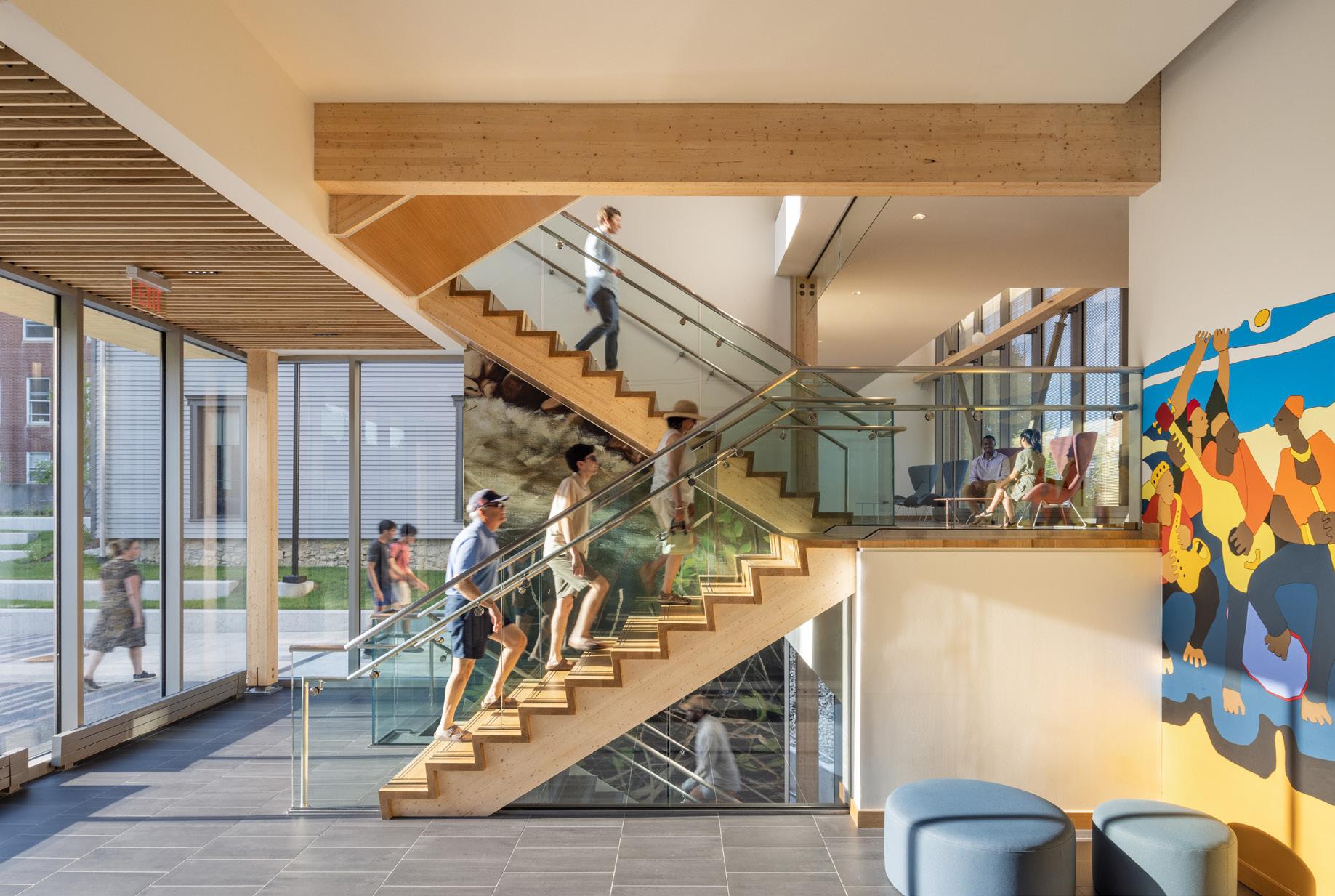


Hanover, NH
RENOVATION & TRANSFORMATION

“The Leers Weinzapfel planning of and design for the renovation of Dana Hall truly creates a silk purse from a sow’s ear. It transforms the previously hidden north end of campus and, for the first time, generates a visual and physical connection with the central campus. The project is a stunning success on all levels.”
- John Scherding, Former Associate VP of Planning, Design & Construction, Dartmouth College
Named for alumni and friends who have quietly supported the college over two centuries, the $28M project reuses and adds to a vacant 1960s library in the heart of the medical school quad, transforming it into a vibrant administrative and social center for the Graduate School of Arts and Sciences and a communal hub for the north campus. Part of a wider campus renewal plan, metrics show the project is close to net zero energy use.
The addition’s main floor houses the building’s lobby and a café, with an adjacent terrace overlooking a newly formed lawn. The building’s upper floors contain faculty offices, classrooms, and places for student gathering tied together by a spiral stair visible from the south lawn. The uppermost level features a solar-paneled canopy and a south-facing planted terrace that looks to the iconic main campus. The graduate student lounge at the building’s lowest level opens directly to a lowered courtyard below pedestrian bridge connecting the north quad to campus.
The reuse of the existing buildings concrete and steel structure substantially reduces the project’s embodied carbon footprint. As a structure in a cold climate, the choices of lightweight high R value terra-cotta-clad walls, efficiency radiant heat and cooling with natural ventilation, solar panel canopy, and high-performance south-facing glass with an expanded metal interlayer for dynamic solar heat gain reduction make a particularly energy efficient building.
AIA Education Facility Design Award, 2024
Fast Company Innovation By Design, 2022, Sustainability, Honorable Mention
Chicago Athenaeum Green Good Design Award, 2022
Chicago Athenaeum American Architecture Awards, 2022, Honorable Mention
The Plan Awards, 2022, Finalist, Education
WAN Awards Glass in Architecture Finalist, 2021
World Architects Building of the Year Finalist, 2021
Retrofit Metamorphosis Award, First Place in “Addition”, 2021
The Plan Awards - Finalist, Education, 2021
DNA Paris Awards - Winner, Architecture/Educational & Sports, 2021

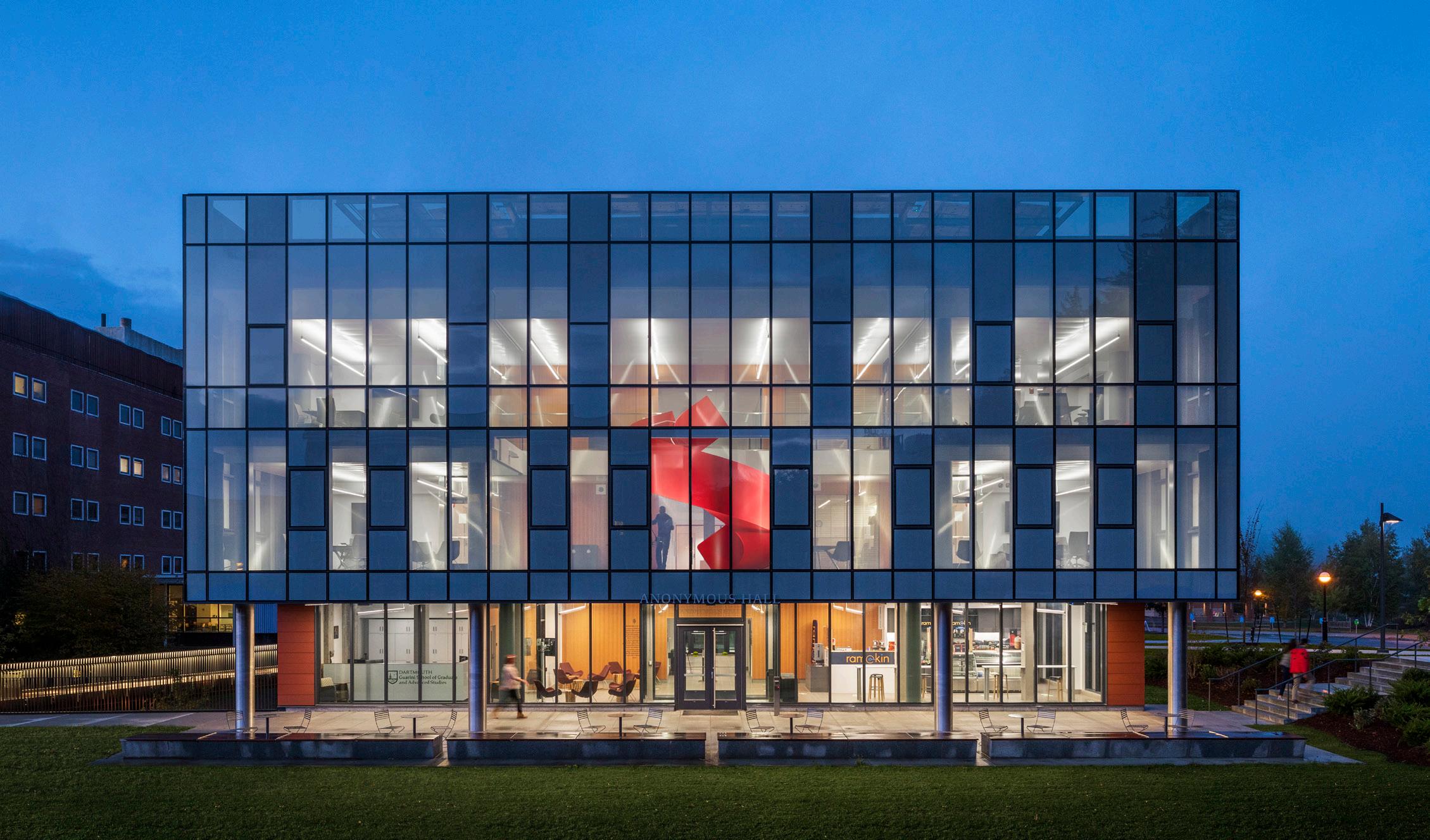


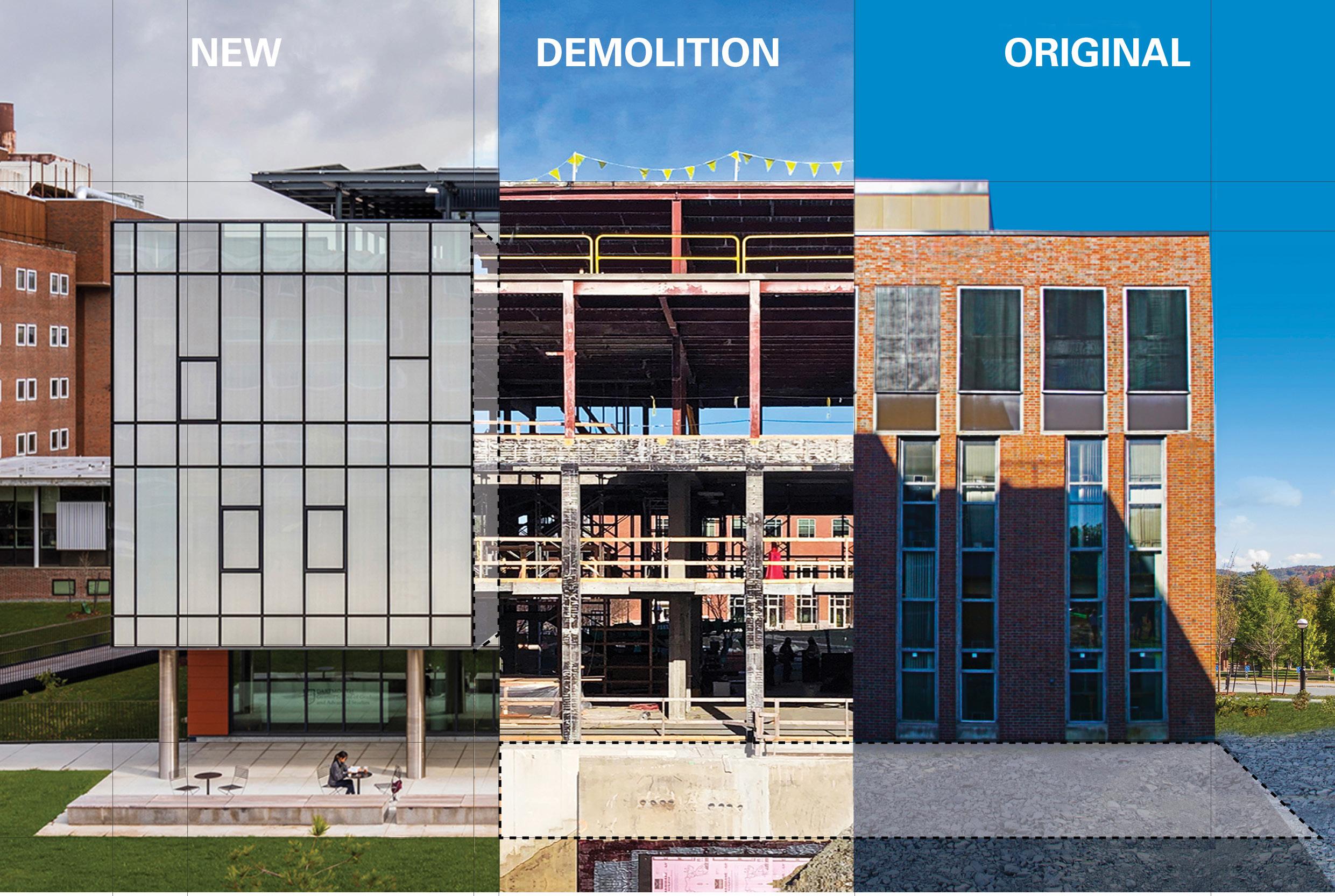
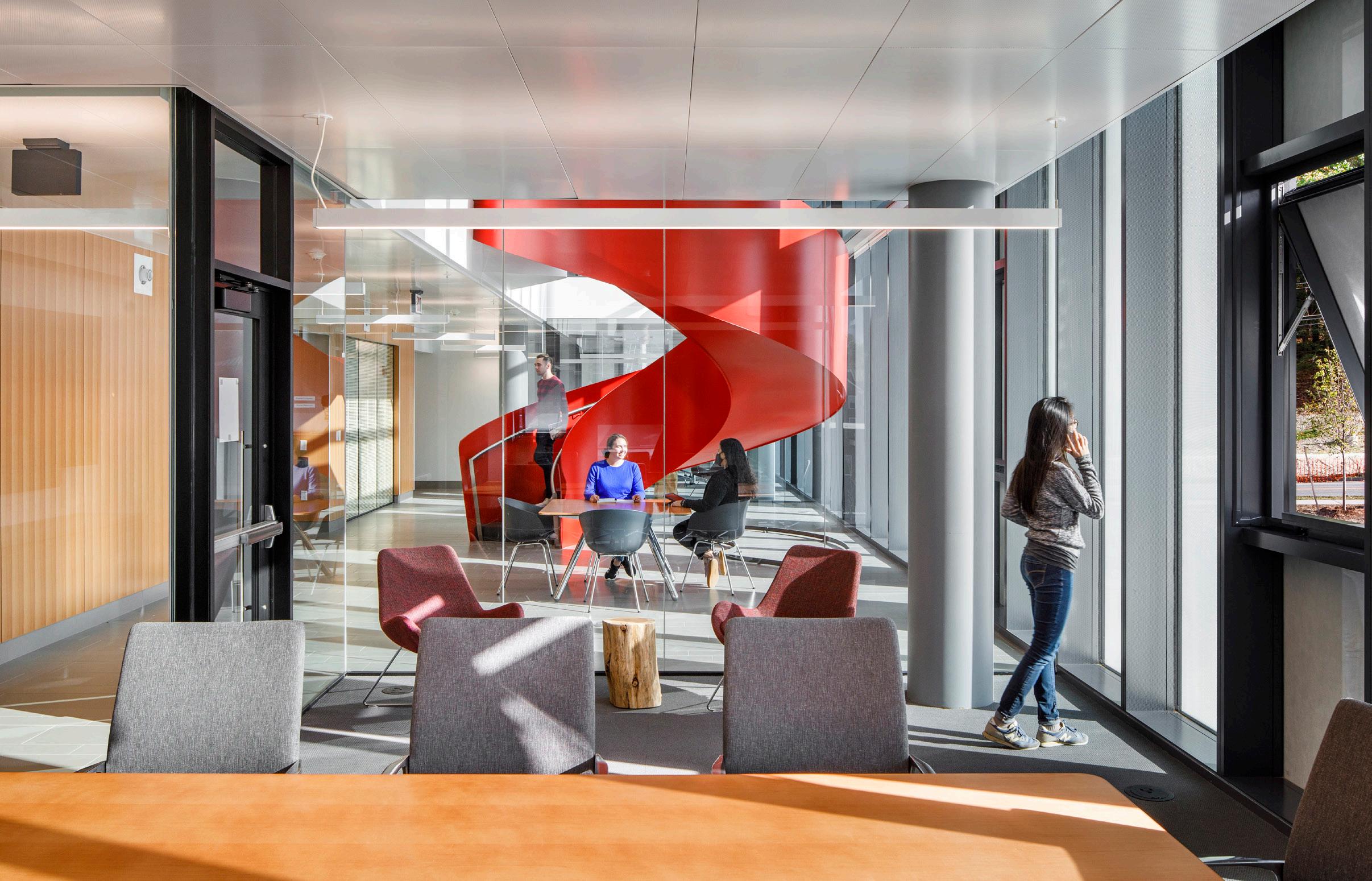

Cambridge, MA
RENOVATION & TRANSFORMATION
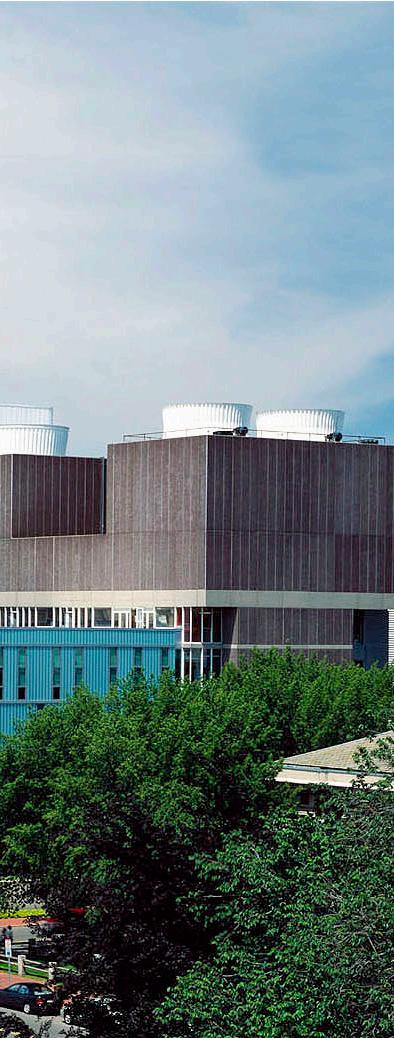
“The formerly modest food court has exploded in size, extending outward to become a greenhouse-like pavilion that opens onto a handsome outdoor eating terrace. A skylight at the main intersection of corridors is rebuilt and looks glorious. Harvard’s great collection of antique scientific instruments, long hidden in a basement, has been installed in a new permanent museum space that looks out on the eating terrace. The Science Center was always a good place to work, study, or socialize, but it’s a better one now.”
— Robert Campbell, The Boston Globe
Working in Josep Luis Sert’s modern landmark Harvard University Science Center for over twenty years, Leers Weinzapfel Associates has designed multiple new research and learning spaces to respond to changing science pedagogy.
Harvard University Science Center Expansion Cambridge, MA | 2000-2004
The campus design challenge was to add 32,000 SF of additional space for six departments in three vertical additions to the 300,000 SF Harvard Science Center and create an accessible entrance at the street address without compromising the building’s architectural integrity and campus presence.
Harvard University Computer Science / Statistics Data Science Lab | 2018
The Computer Science/Statistics Data Science Lab in the Harvard University Science Center was programmed with Dr. Susan A. Murphy to be a flexible welcoming space for both graduate students and undergraduates. Retaining its exposed concrete columns and beams, a new light-filled gathering space is now the center of the Murphy Lab, surrounded by glazed offices and workspaces.
Cabot Library Renovation | 2019
Renovations to the second floor of the Harvard University Science Center’s Cabot Library have created a learning commons surrounded by acoustically-separated small group study rooms. The original stack-filled area with its solid-walled stair was opened up by replacing the solid block of the stair with a glass enclosure, allowing the sunlight from the light scoop to flood the communal central space.
Lobby and Teaching Lab Renovations | 2024-5
Lobby and public spaces are transformed with greater visibility to labs and with wood lined social and group study spaces. Laboratories are reconfigured for greater flexibilty and transparency.
International Design Award, Institutional PRO Category, awarded to Puches Design for the Putnam Exhibit Gallery, 2007
The Chicago Athenaeum American Architecture Award, 2006
Boston Society of Architects, 2004
AIA New England Award, 2004

A / Harvard University Science Center Expansion Cambridge, MA | 2000-2004
B / Harvard University Computer Science / Statistics Data Science Lab | 2018
C / Cabot Library Renovation | 2019
D / Lobby and Teaching Labs Renovations | 2024-5




Cambridge, MA
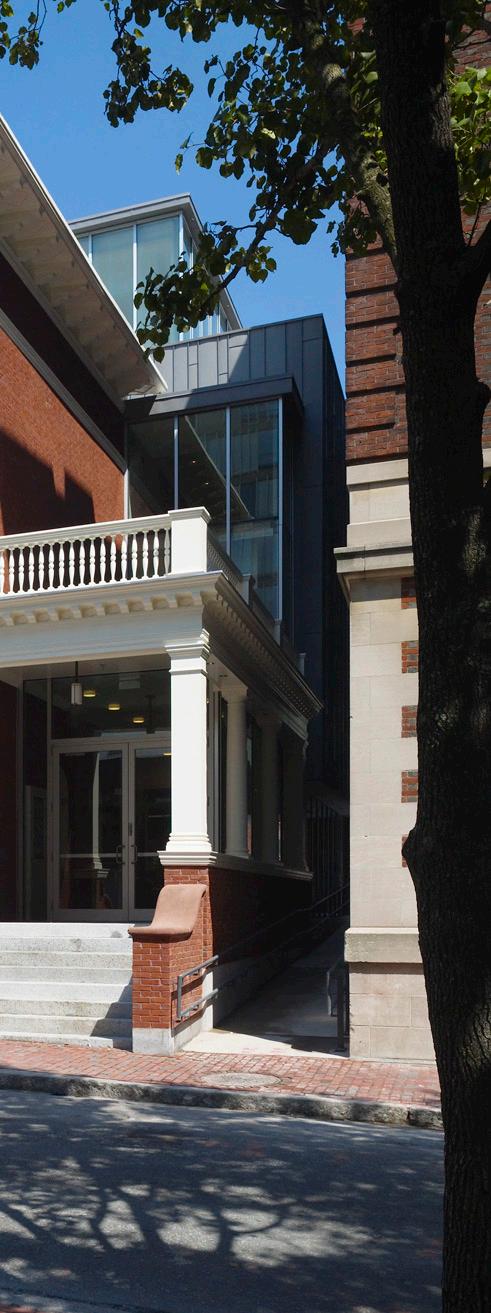
“The good news is that the restoration of the old building is deeply respectful and superbly detailed. Even Charles Sullivan, the hard-toplease director of the Cambridge Historical Commission, which had jurisdiction, says ‘It’s a really good restoration.’ The better news is the new theater itself. Somehow, the architects have shoehorned a 272-seat contemporary theater with all the trimmings into a space that used to be filled by a ratty rear wing that wouldn’t come close to passing a fire inspection today.”
— Robert Campbell, The Boston Globe
A new home for Harvard’s undergraduate theatrical and musical performance, Farkas Hall restores, transforms, and expands the former Hasty Pudding Club at the heart of Harvard Square.
Originally a social club and home of the Hasty Pudding Theatricals, the new stage continues the traditions of the Theatricals, including the Man and Woman of the Year awards, and in addition hosts production by Harvard-affiliated groups and performances open to the public, signaling a new era of innovation for the performing arts at Harvard.
The original front one-third of the 1887 brick structure and its entry porches were retained and restored for lobby and multipurpose uses. The rear two-thirds of the building was removed, rebuilt and expanded with three new stories below grade for the new theater and its support spaces and three above for a black box/rehearsal space and stage house to accommodate the full theatre program. The 272-seat theater is entered from the restored lobby and steps down a full floor level to the stage. Inside the theatre, deep crimson aniline dyed wood paneling and internally lit air diffusers create a bold and imaginative environment for student productions. Equipped with a moveable thrust stage, orchestra pit, and full theater lighting, the flexible performance space is rich with educational opportunities. The south porch of the original building and adjacent ramped passage form the new accessible public theatre entry. Glimpsed from the street, the transparent lobby zone of the new building invites passersby into an intriguing modern theatre just beyond the historic façade.
Boston Society of Architects / Merit Award
Cambridge Historical Commission / Preservation Award
Assoc. General Contractors / Aon Build America Award Building Design and Construction Magazine / Reconstruction Award, Gold Level



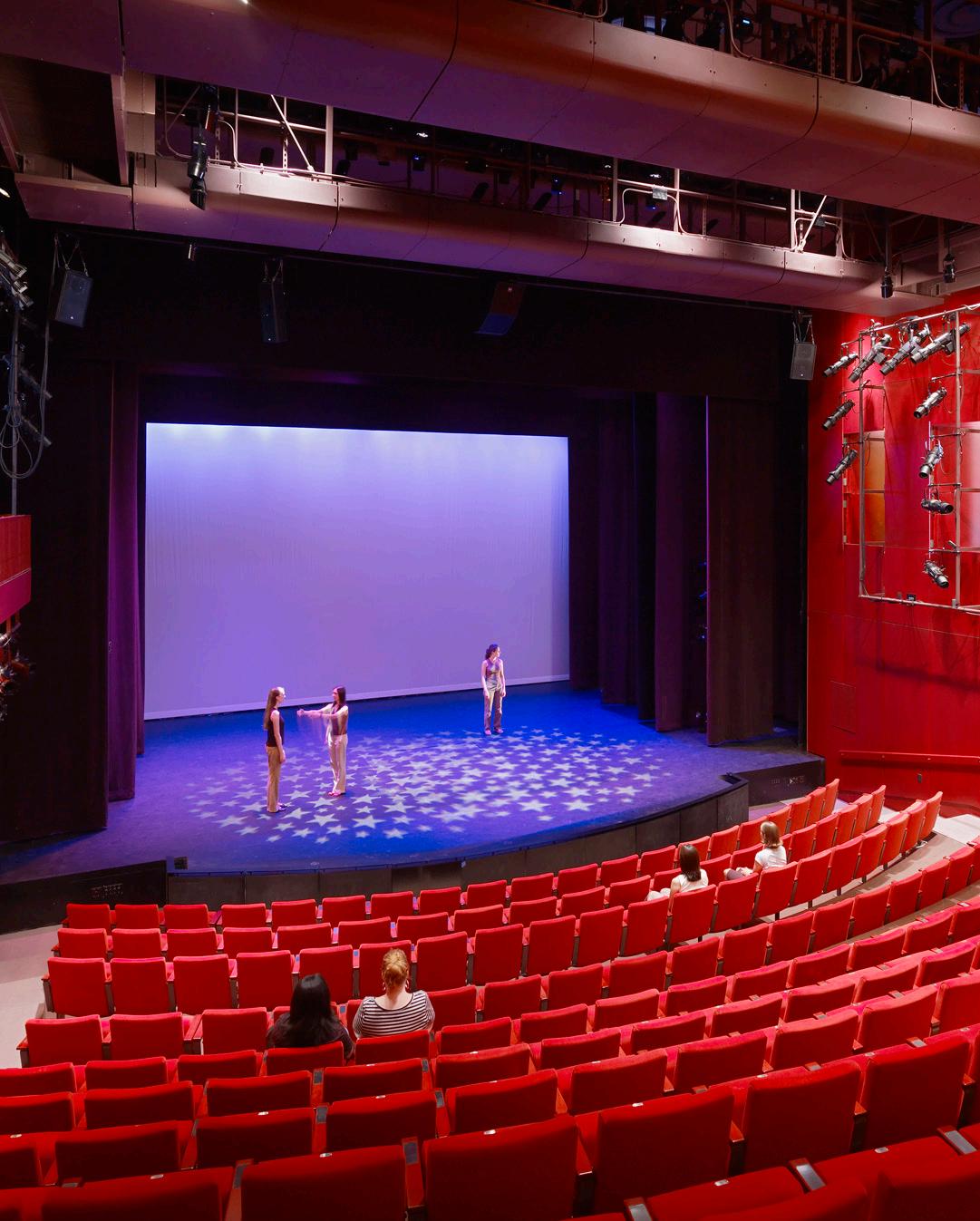

COMMUNITY COLLEGE
Lowell, MA
RENOVATION & TRANSFORMATION

“Being a registered architect with over 30 years’ experience, I can truly appreciate LWA’s ability to not only meet the challenge but exceed in the task of repurposing and restoring a historically significant structure and seamlessly integrating it with 21st century amenities.”
— Fabrizio Caruso, AIA, LEED AP DCAMM Deputy Director, Office of Design and Construction
A new performing arts center for student use reimagines an historic train depot in Lowell MA as a vibrant piece of the city, restoring the old structure and celebrating the new.
To accommodate a proscenium theater, music recital hall, and a dance studio, a simple egg-shaped volume is inserted within the 1876 brick shell. The major space in the “egg” is a 177seat theater, that descends from the first floor lobby into the basement creating a tall compact audience space with excellent sight lines. The efficient curved shape of the new insertion serves as the structural core of the building, supporting both new spaces as well as bringing the deteriorating historic structure into compliance with modern codes.
To create a fully functioning theater and other performing spaces, the design called for the excavation and construction of a new basement built on the bedrock and a new wing in the back, housing the mechanical and support spaces. These additions nearly double the area available within the building for the College’s vibrant and growing music, theater and dance departments. The departments are dedicated to teaching the art and craft of the performing arts. Each major teaching space combines a professional level technological environment with the intimate scale appropriate for student performance.
The site of the new performing arts center, within the Lowell National Historic Park, is part of the renewed urban core. The new Richard and Nancy Donahue Family Academic Arts Center will serve as a catalyst for future urban development and will cement the College’s commitment to an urban campus.
Preservation Massachusetts, Mayor Thomas M. Menino Legacy Award, 2021
BSA Higher Education Facility Award, 2021, Citation
Retrofit Magazine’s Metamorphosis Award - First Place Adaptive Reuse 2020
The Plan Awards - Renovation, Shortlist 2020
DNA Design Awards Paris - Honorable Mention 2019
The Plan Awards - Finalist 2019


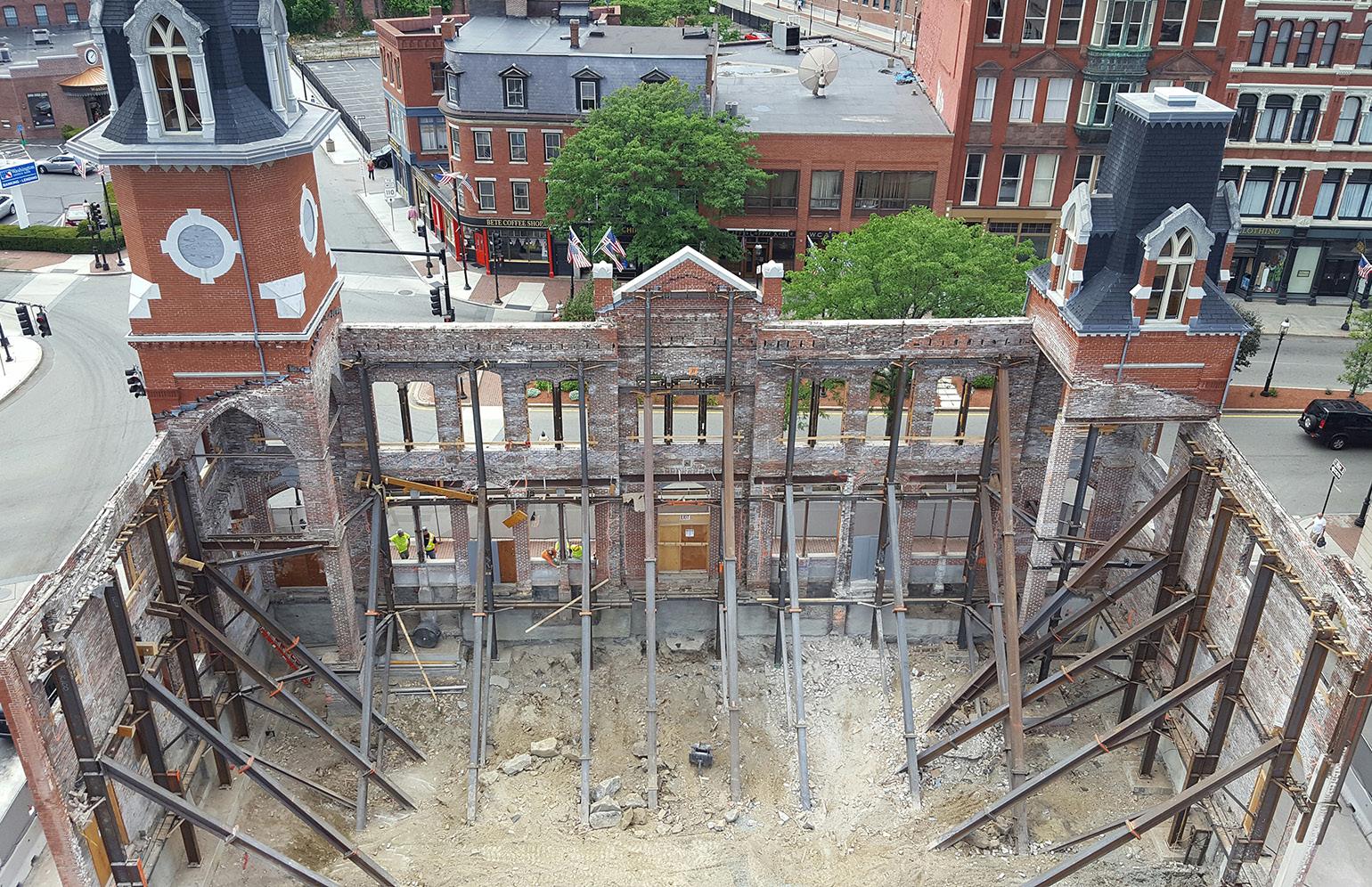



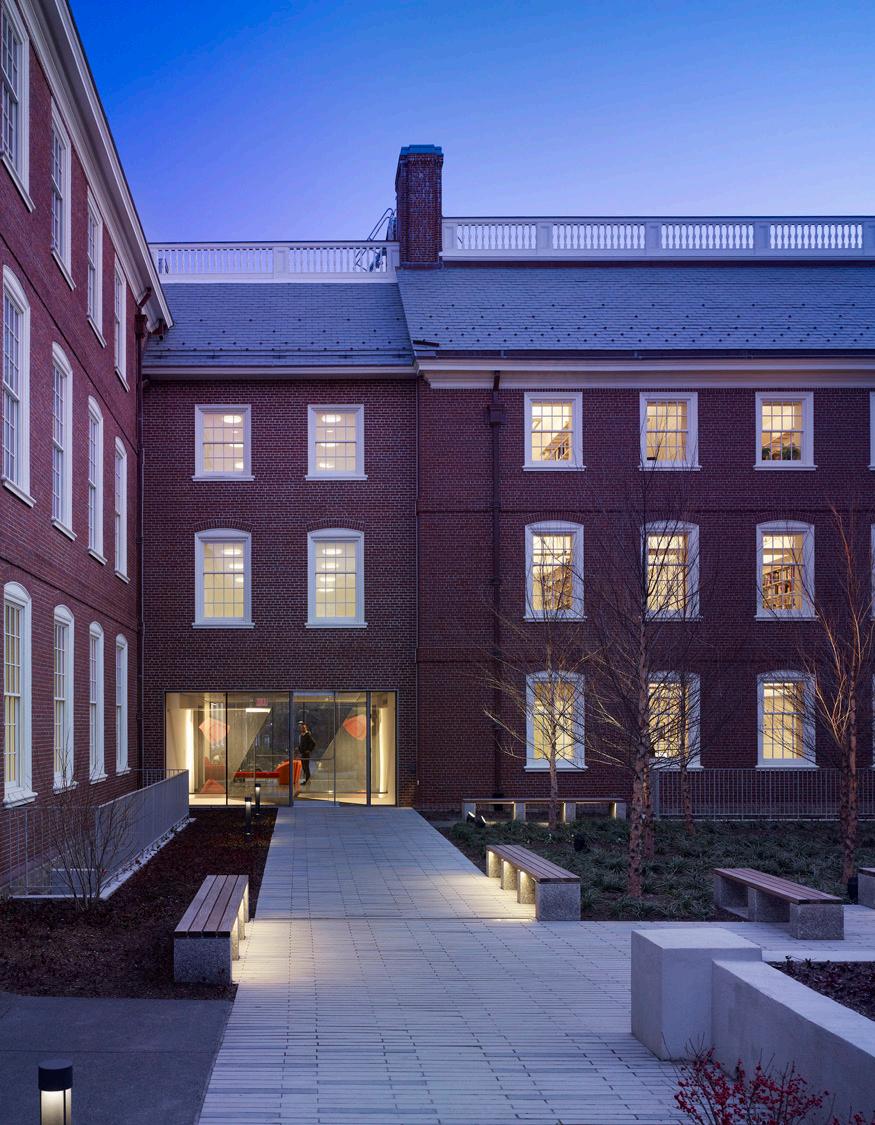
BROWN UNIVERSITY
Providence, RI
RENOVATION & TRANSFORMATION

“The new auditorium is absolutely fantastic. It’s state-of-the-art, beautiful, well designed and the faculty are going to be fighting tooth and nail over who gets to teach in the space…the renovated building provides a new energy and excitement that catapults us into a different level.”
Sheila Blumstein
Albert D. Mead Professor, Cognitive Neuroscience of Language
To create a precedent setting environment for the study of the mind, brain, and behavior disciplines, this complex renovation restores and transforms two prominent buildings on Brown’s Lincoln Field.
In place of earlier studies for a new building, this renovation unites the departments of Psychology and Cognitive Science and Linguistics in a single complex combining the 1921 Metcalf Chemistry Lab, the 1937 Metcalf Research Building, and the 1950’s link between them. The design goal was to create an interactive, open, and collaborative research environment overcoming the limitations of the layout and dimensions of the two buildings originally planned for very different purposes.
The L-shaped complex is reorganized to create a faculty office wing and a research lab wing linked by a pivotal gathering and circulation core of open lounges and conference rooms surrounding the central stair and elevator. In the original lecture hall, restored daylight at previously closed windows dramatically transforms a neglected space. The Dome Room, named for its beautiful ceiling laylight, becomes a faculty colloquium and reception room. The space of a former exit stair is captured for an intimate library.
The building’s presence on Lincoln Field is enhanced by the restoration of a previously closed main entrance, and the creation of a fully transparent common lounge on the ground floor of the link area. The two wings of the building frame a sunny courtyard, formerly filled with equipment, now filled with a bosc of birch trees and granite benches.
Restoration of the envelope of the building, including new operable insulated windows, and insulation at exterior walls and roof, achieves a LEED Gold rating and performs 20% better than basic energy code requirements.

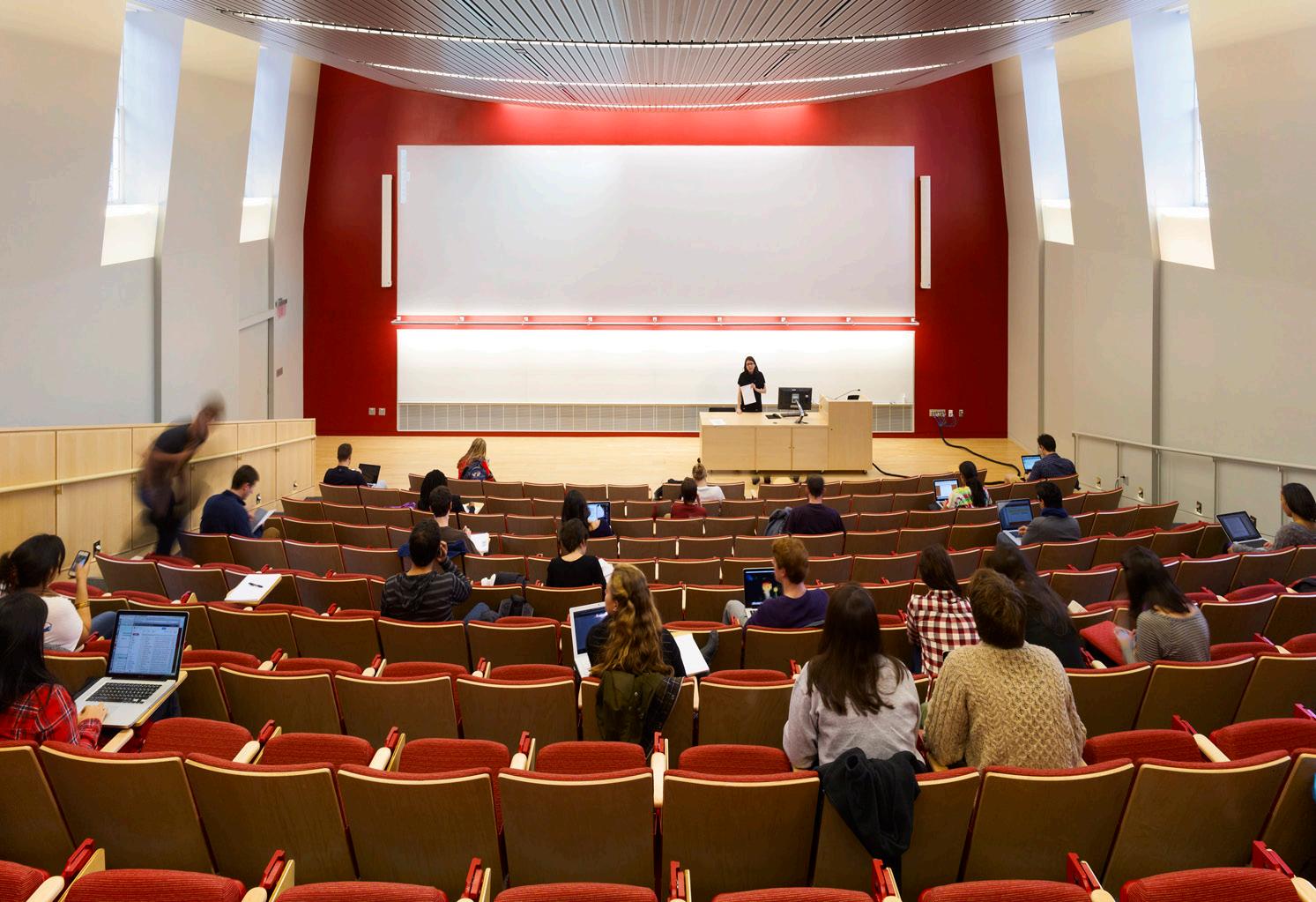



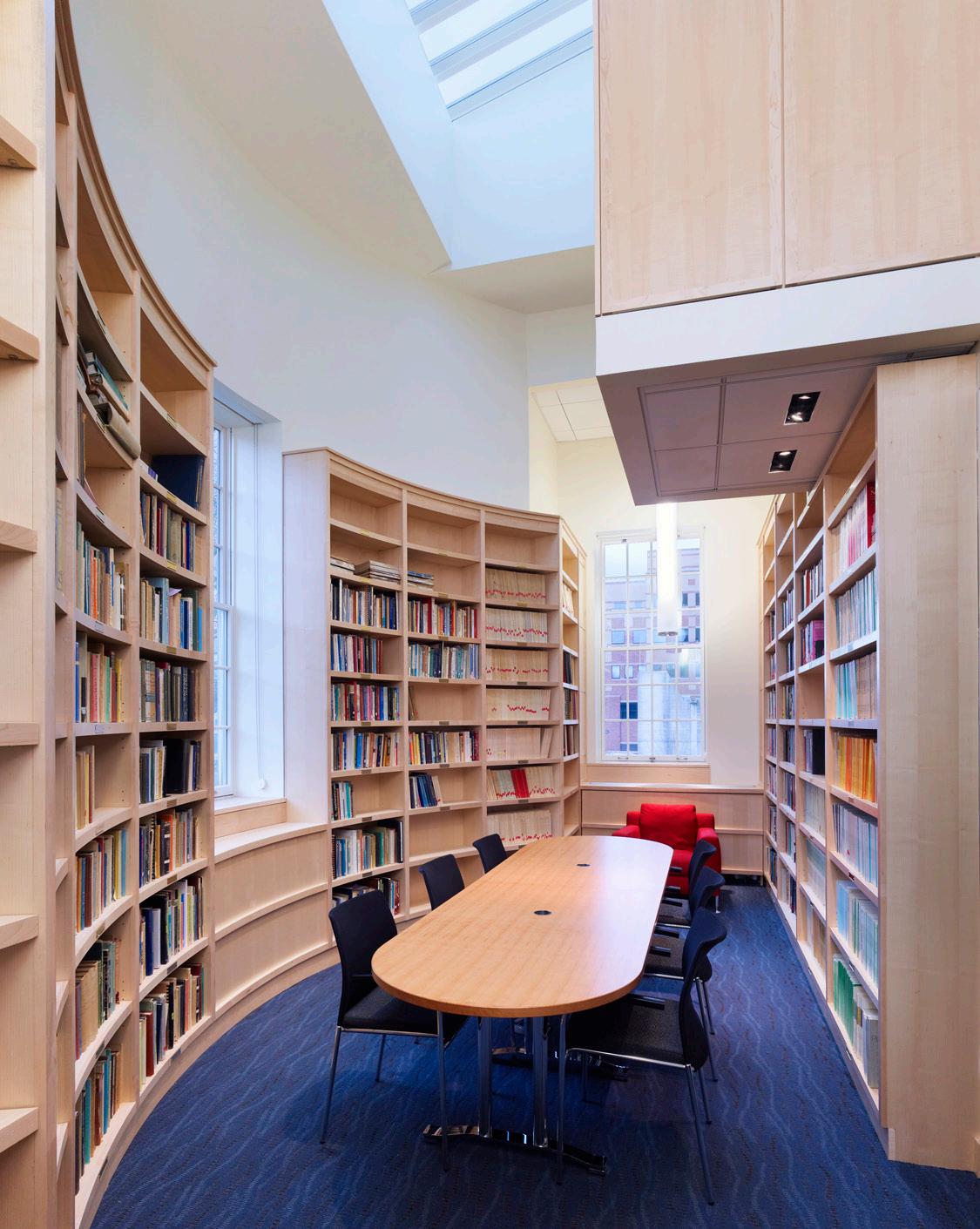

Allston, MA

“This project is elegantly simple—or, an elegant reduction of a complex system into something somewhat understandable. Architects don’t always get to choose a program. We were excited about this infrastructure project with its compelling, jewel-like expression of the interior function on the exterior. Expertly executed from concept to detail, with a clarity apparent through elimination of any unnecessary elements. This is an exemplary presentation with clear case-study diagrams and design solution.”
— BSA Design Awards 2021, Jury comment
The District Energy Facility (DEF) embodies a stateof-the-art, cost effective, resilient, and sustainable energy generation system for Harvard University’s Allston campus.
Resiliency, flexibility, and innovation are key goals for the design to transition to a fossil-fuel-free future, withstand climate impacts including storm surge flooding, and provide a reliable source of heating, cooling, and electricity on the campus. Occupying a previously deserted railyard, the DEF soon will be surrounded by science and engineering development, conference/hotel, and midrise residences. The building’s compact cubic form allows for flexibility of future development around it while maintaining a singular bold and refined presence. Aluminum fins form a wrapper around the building, revealing or concealing the various equipment areas, while showing technology on display. The project is a visual celebration of the numerous invisible benefits of district energy plants: resiliency, energy efficiency, reduced energy costs, decreased carbon emissions, lowered air pollution, and minimized acoustical transmission.
Architizer A+ Finalist, 2024
AIA New England Architecture Honor Award, 2023 - Winner DNA Paris Awards, 2023 - Winner, Architecture/Infrastructure & Transportation Fast Company Innovation By Design, Urban Design - Honorable Mention, 2023
Architizer A+, 2023 - Factories + Warehouses Finalist, Architecture
Chicago Athenaeum – Green Good Design Award, Winner, 2023
Rethinking the Future - Runner-Up, Institutional (Built), 2022
Chicago Athenaeum American Architecture Award, Winner, 2022
Dezeen Awards, 2022 - Architectural Lighting, Longlisted World Architecture Festival, 2022Shortlist for Production, Energy & Recycling World Architecture Festival, 2022 - Shortlist for Colour in Architecture World Architecture News, 2022 - Shortlist, Urban Landscape




OHIO

Columbus, OH
INFRASTRUCTURE
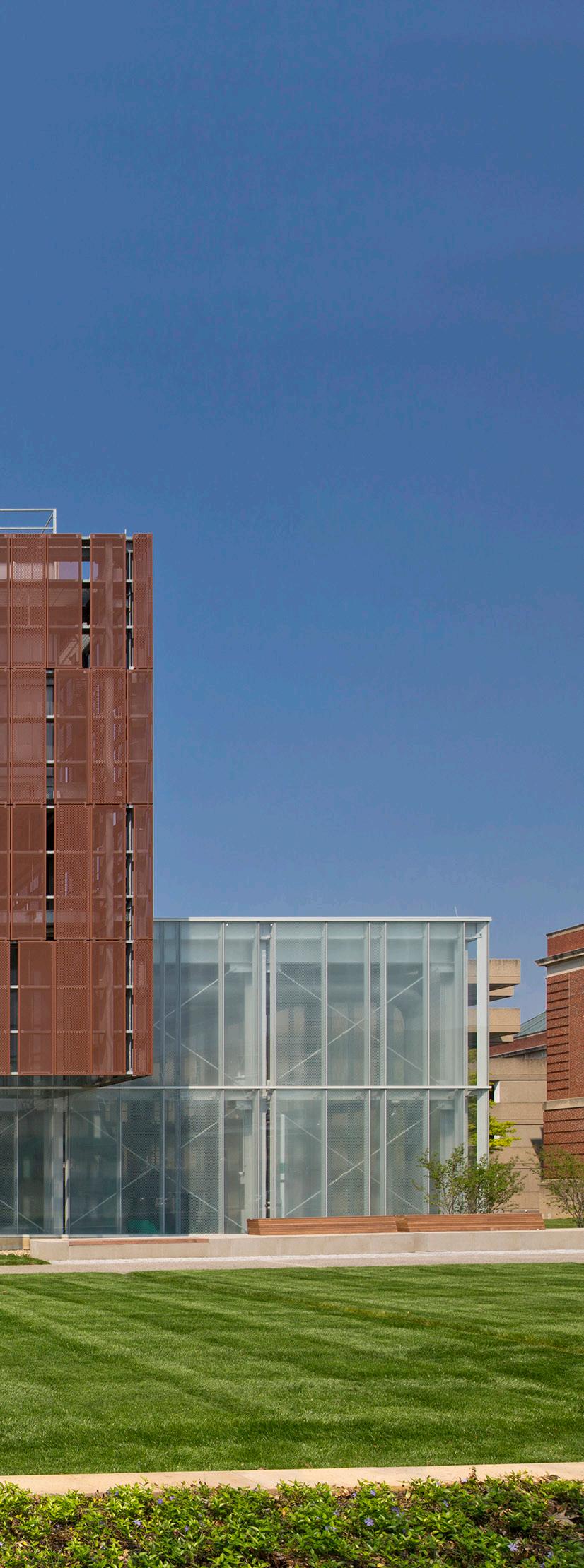
“Sited on a campus where people would prefer not to see a typical plant, this structure represents successful “skin deep” design, with perforated panels that let light play against the facade. It could have been a dumb box, but instead represents innovation in an infrastructure project. It’s extremely well done and restrained. We appreciate not just its parts and pieces, but the craft of assembly, its proportions, and the palette. This is beautiful work–for a chiller plant.“
– Jury comment, 2015 BSA Honor Citation
This iconic new structure introduces a large, critically important infrastructure facility to a mature campus, preserves an important green space at the campus edge, and frames the gateway for a new campus entry.
A sculptural solution for the 15,000 ton chilled water plant is integrated into the arts sculpture green area along the university’s east campus edge. The result is an elegant approach that fits well with the urban site and its surrounding context. The gem-like structure’s scale, which responds to the older brick buildings around it, is modulated by its composition of two offset volumes — a lower, two-story, glazed rectangular volume that is veiled and diaphanous on the exterior, with semitransparent views from the interior looking out.
Designed to support the densely packed equipment layout, both the upper and lower volume respond to unique engineering requirements, creating zones of machine activity. A linear zone is created within the lower, two-story enclosed rectangular volume with mezzanine, and a squared zone within the upper screened volume.
Both volumes are gently illuminated at night to provide site lighting for the surrounding pedestrian zones and to continue the dialogue between the forms and their contrasting materials. The glowing crystalline lower volume is illuminated from the inside. The repeating pattern of clear glass and translucent fritted glass in three frit densities and four sizes offers a consistent variability.
The new LEED Certified chilled water plant will significantly
ASSOCIATE ARCHITECT
GBBN Architects
BSA Honor Awards, Citation 2015
The Chicago Athenaeum, American Architecture Award 2015 exhibited in Istanbul, 2015
World Architecture Festival Finalist, Infrastructure jury in Singapore 2012
DNA Awards - Honorable Mention, 2019




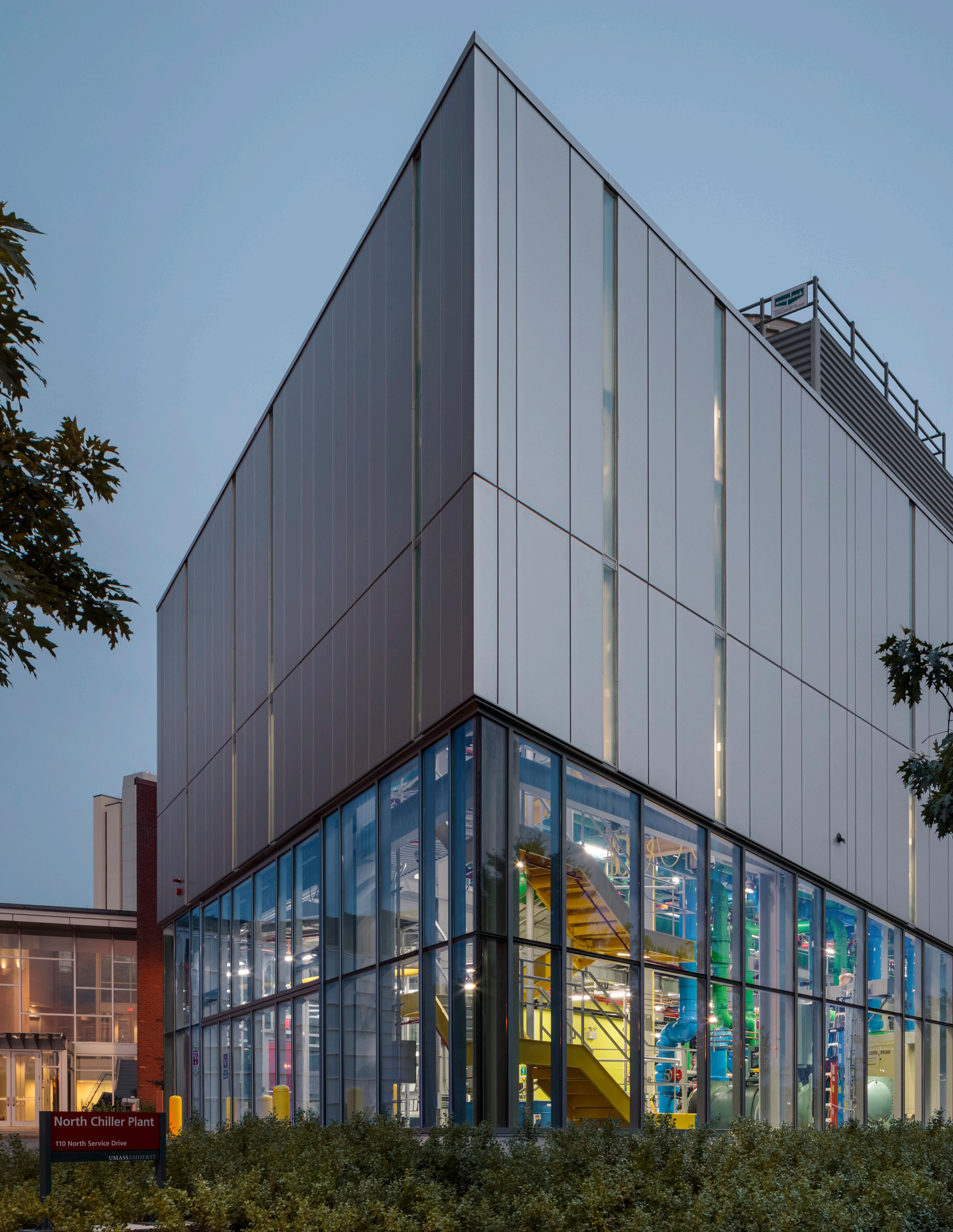
Amherst, MA

“This chiller plant is an unexpectedly beautiful building. Its design celebrates the industrial and makes it fun with a mix of color and transparency that maximize its passive educational potential. A historically forgettable building type becomes a sublime architectural moment, framing pedestrian flows and views to the surrounding landscape.”
— Jury Comment, Boston Society of Architects (BSA) Honor Awards, 2019
The new 10,592-square-foot chiller plant, a component of the university’s 2012 Campus Master Plan, is designed to increase the reliability and capacity of chilled water service throughout the growing north campus core by reimagining the existing regional plant it replaces.
Located in the engineering quadrant, the North Chiller Plant was planned for a narrow zone between an existing, outmoded 1991 plant and an existing engineering building. This approach allowed the existing facility to continue operation during construction while its equipment was relocated to the new space and new mechanical and electrical systems were installed. Then, the original plant was demolished. The design of the North Chiller Plant was proposed to remain outside a view shed from the center of campus to the Northwest, referred to as “The Feather” in the Campus Master Plan. Its innovative parallelogram shape accommodates new chillers parked at an angle inside the narrow building, while allowing important campus views from the existing engineering building.
Providing a “visual learning” element to the engineering quadrant community, the building has ground level perimeter glazing that showcases its interior operations and equipment to passersby, offering “technology on display” through the glazed base of the building. The energy-efficient insulated panel system above is punctuated with channel glass strips, illuminating the upper equipment platform. The glazed base is highest on the north to allow vehicle access through a glazed bi-fold door; the glazing head slopes down along the east, south and west for reduced solar gain on those orientations.
Chicago Athenaeum – American Architecture Award, Winner, 2023
BSA Honor Award for Design Excellence, 2019
Architect’s Newspaper Best of Design Award, 2019
The Plan Award, Honorable Mention, 2020

